June 30, 2024
Prelims Pointers
June 30, 2024
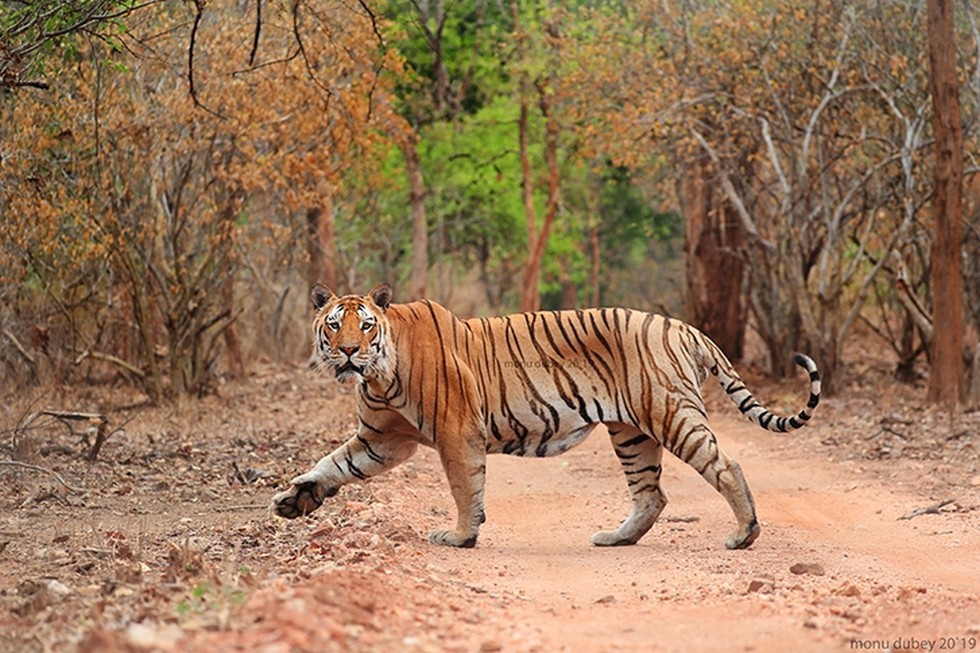
पेंच बाघ अभयारण्य के बारे में:
-
स्थान: यह अभयारण्य मध्य प्रदेश के सिवनी और छिंदवाड़ा जिलों में सतपुड़ा पहाड़ियों के दक्षिणी छोर पर स्थित है और महाराष्ट्र के नागपुर जिले में एक अलग अभयारण्य के रूप में जारी है।
-
इसका नाम पेंच नदी के नाम पर रखा गया है, जो अभयारण्य के माध्यम से उत्तर से दक्षिण की ओर बहती है।
-
इसमें इंदिरा प्रियदर्शिनी पेंच राष्ट्रीय उद्यान, पेंच मोगली अभयारण्य और एक बफर शामिल है।
-
पेंच बाघ अभयारण्य और आसपास का क्षेत्र रुडयार्ड किपलिंग की प्रसिद्ध "द जंगल बुक" की वास्तविक कहानी वाला क्षेत्र है।
-
भू-भाग: यह ऊबड़-खाबड़ भाग है, जिसका अधिकांश क्षेत्र छोटी पहाड़ियों और किनारों पर खड़ी ढलानों से ढका हुआ है।
-
वन-प्रकार: लहरदार स्थलाकृति एक नम आश्रय वाली घाटी से लेकर खुले, शुष्क पर्णपाती वन तक वनस्पतियों का समर्थन करती है।
-
वनस्पति: अभयारण्य में वनस्पतियों की एक विविध श्रेणी है, जिसमें सागौन, साग, महुआ और विभिन्न घास और झाड़ियाँ शामिल हैं।
- जीव:
- यह क्षेत्र विशेष रूप से चीतल, सांभर, नीलगाय, गौर (भारतीय बाइसन) और जंगली सूअर के बड़े झुंडों के लिए प्रसिद्ध है।
- मुख्य शिकारी बाघ है, उसके बाद तेंदुआ, जंगली कुत्ते और भेड़िया हैं।
- यहाँ निवासी और प्रवासी पक्षियों की 325 से अधिक प्रजातियाँ हैं, जिनमें मालाबार पाइड हॉर्नबिल, इंडियन पिट्टा, ऑस्प्रे, ग्रे हेडेड फिशिंग ईगल, व्हाइट आईड बज़र्ड आदि शामिल हैं।
Prelims Pointers
June 30, 2024
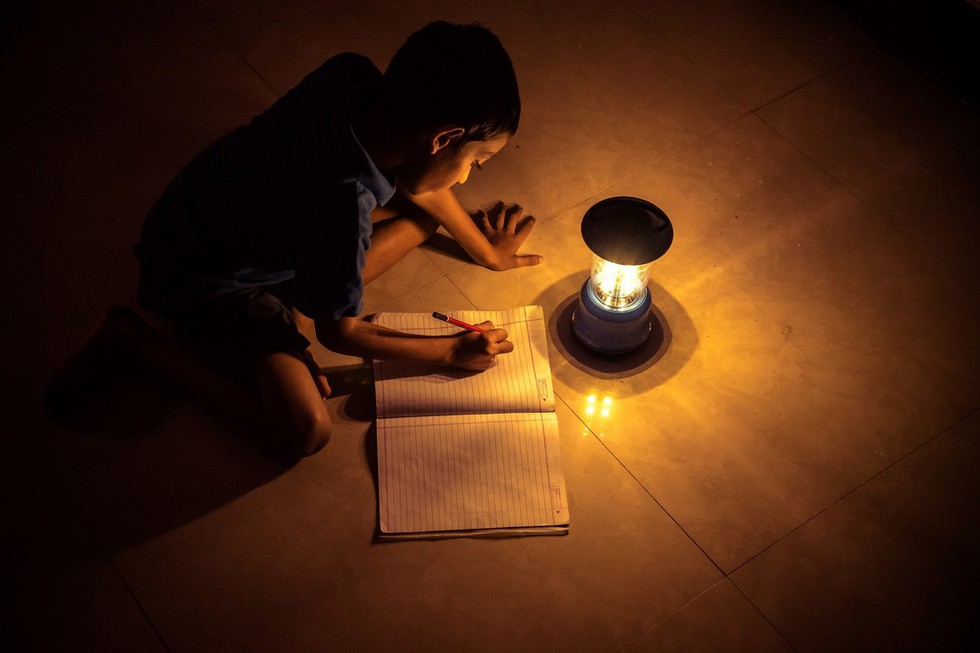
About Saubhagya Scheme:
- The Government of India launched Pradhan Mantri Sahaj Bijli Har Ghar Yojana (SAUBHAGYA) in October, 2017
- Objective: Achieving universal household electrification, by providing electricity connections to all un-electrified households in rural areas and all poor households in urban areas in the country.
- Under the Saubhagaya scheme, LED bulbs, wire, holders, switches, etc are to be provided to BPL families free of cost.
- Salient features of the scheme were:
- Providing last-mile connectivity and electricity connections to all un-electrified households in rural areas.
- Providing Solar Photo Voltaic (SPV)-based standalone systems for un-electrified households located in remote and inaccessible villages / habitations where grid extension is not feasible or cost effective.
- Providing last mile connectivity and electricity connections to all remaining economically poor un-electrified households in urban areas. Non-poor urban households are excluded from this scheme.
- In the rural areas, families other than BPL family’s electricity connection has to be provided for Rs. 500. The consumer has to pay the amount in 10 equal installments of Rs. 50 in each bill, in the urban areas, the BPL families will be provided free power connection.
- It is a provision that families of rural areas, which are not possible to issue electrical assemblies through grid supply, have to be published through solar energy.
- Rural Electrification Corporation (REC) has been designated as its nodal agency for the Saubhagya scheme.
- The beneficiaries for free electricity connections will be identified using Socio Economic and Caste Census (SECC) 2011 data.
Prelims Pointers
June 30, 2024
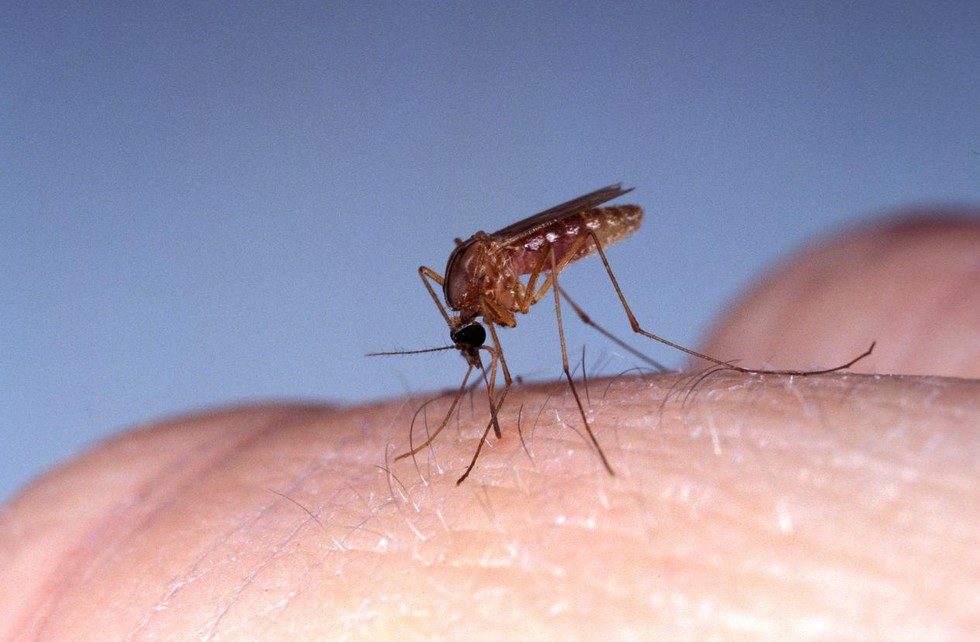
About Oropouche Fever:
- It is an emerging zoonotic arboviral disease caused by the Oropouche Virus (OROV).
- OROV is part of the orthobunyavirus family, with an incubation period of 4 to 8 days.
- It was first discovered in Trinidad and Tobago in 1955.
- Symptoms:
- The symptoms of Oropouche fever often mimic those of other viral infections, including fever, headache, muscle pain, joint pain, and nausea.
- However, severe cases can lead to meningitis or encephalitis, posing significant health risks, especially to vulnerable populations.
- Most patients recover in about a week, but for some, symptoms linger for weeks.
- Transmission:
-
- It is spread to humans through the bite of an infected midge (small fly) or mosquito.
- Factors such as urbanization, deforestation, and climate change contribute to the proliferation of its vector, escalating the risk of transmission.
- Treatment:
- There are no vaccines to prevent Oropouche fever.
- There is no specific treatment for Oropouche fever.
- Medical care aims to control the symptoms and help with recovery.
Prelims Pointers
June 30, 2024
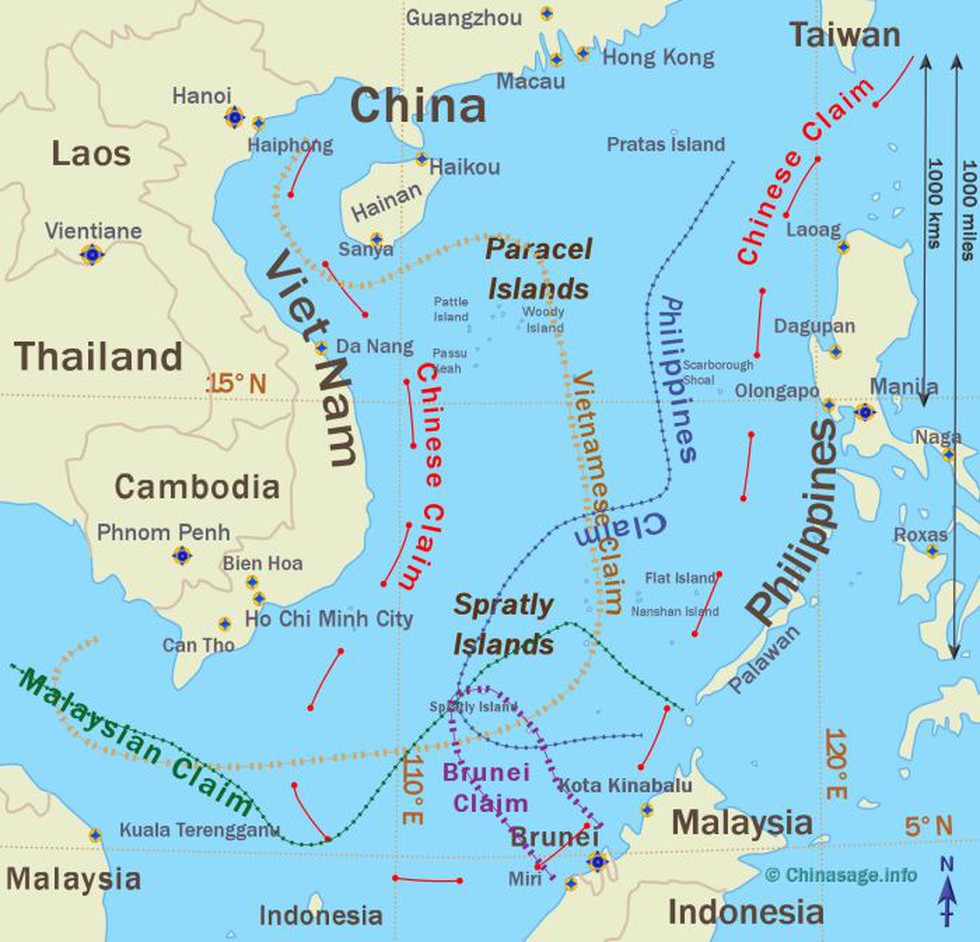
About South China Sea:
- It is an arm of the western Pacific Ocean that borders the Southeast Asian mainland.
- It embraces an area of about 1,423,000 square miles (3,685,000 square km), with a mean depth of 3,976 feet (1,212 metres).
- Boundaries:
- It is bordered by China, Taiwan, Philippines, Malaysia, Indonesia, Brunei, and Vietnam.
- The southern boundary of the South China Sea is a rise in the seabed between Sumatra and Borneo, and the northern boundary stretches from the northernmost point of Taiwan to the coast of Fujian province, China, in the Taiwan Strait.
- It is connected by the Taiwan Strait with the East China Sea and by the Luzon Strait with the Philippine Sea (both marginal seas of the Pacific Ocean).
- The South China Sea and the East China Sea together form the China Sea.
- The two major archipelagos are known as the Paracel Islands, controlled by China, and the Spratly Islands.
- Climate: The weather in the sea is tropical and largely controlled by monsoons.
- It is the second most used sea lane in the world. It is a significant trade route for crude oil from the Persian Gulf and Africa through the Strait of Malacca to Singapore, Thailand, Hong Kong, Taiwan, South Korea, and Japan.
- Major Ports: Hong Kong, Singapore, and Kaohsiung in southern Taiwan.
Prelims Pointers
June 30, 2024

About Pench Tiger Reserve:
- Location: The reserve is located in the southern reaches of the Satpura hillsin the Seoni and Chhindwara districts in Madhya Pradesh and continues in Nagpur district in Maharashtra as a separate Sanctuary.
- It is named after the Pench River,which flows from north to south through the Reserve.
- It comprises of the Indira Priyadarshini Pench National Park, the Pench Mowgli Sanctuary,and a buffer.
- The area of the Pench Tiger Reserve and the surrounding area is the real-story area of Rudyard Kipling's famous "The Jungle Book".
- Terrain: It is undulating, with most of the area covered by small hills and steep slopes on the sides.
- Vegetation: The undulating topography supports a mosaic of vegetation ranging from a moist sheltered valley to an open, dry deciduous forest.
- Flora: The reserve boasts a diverse range of flora, including teak, saag, mahua, and various grasses, and shrubs.
- Fauna:
- The area is especially famous for large herds of Chital, Sambar, Nilgai, Gaur (Indian Bison), and wild boar.
- The key predator is the tiger, followed by the leopard, wild dogs, and wolf.
- There are over 325 species of resident and migratory birds, including the Malabar Pied Hornbill, Indian Pitta, Osprey, Grey Headed Fishing Eagle, White Eyed Buzzard, etc.
Prelims Pointers
June 30, 2024
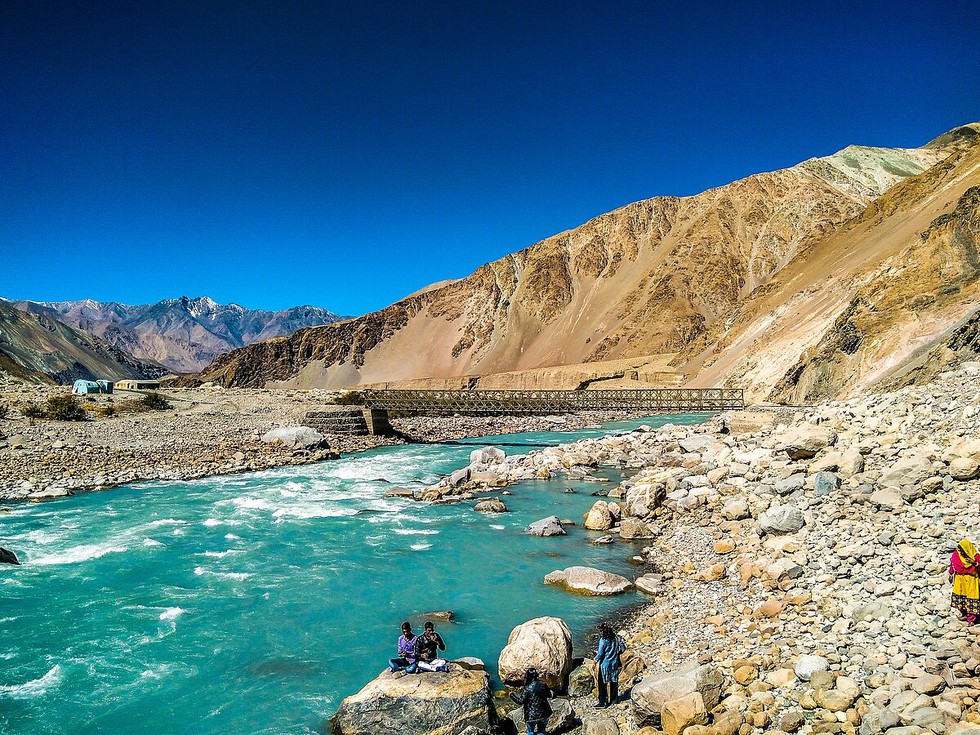
About Shyok River:
- It is a river that flows through northern Ladakh in Jammu and Kashmir, India and enters the Pakistan-administered region of Gilgit-Baltistan, where it joins the Indus River.
- It is a tributary of the Indus River.
- Course:
- It originates from the Rimo Glacier; one of the tongues of the Siachen Glacier, and gets its name from a Ladakhi word meaning 'the river of death'.
- The alignment of the Shyok river is very strange, originating from the Rimo glacier, it flows in a South-East direction and at joining the Pangong range, it takes a north-west turn and flows parallel to its prior path.
- The Shyok, flowing in a broad valley, rapidly enters a narrow gorge after Chalunka and then joins the Indus at Skardu (Pakistan).
- The total length of the river is around 550 km (340 mi).
- It is fed by meltwater from numerous glaciers on its journey.
- It meanders through the high-altitude deserts and mountain ranges of Ladakh before converging with the Indus.
- Its main right-bank tributary is the Nubra River.
Prelims Pointers
June 30, 2024
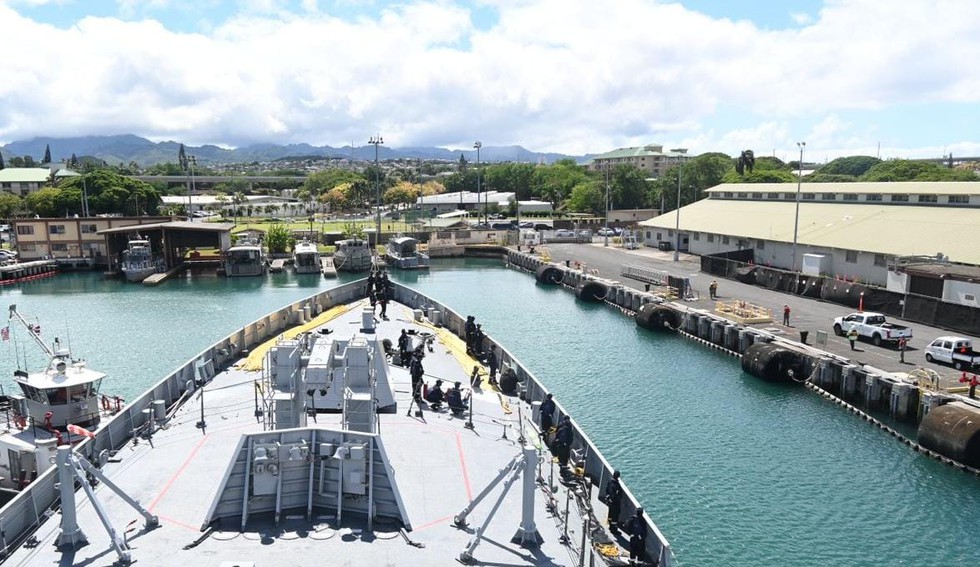
About Rim of the Pacific (RIMPAC) Exercise:
- It is the world’s largest international maritime exercise, being held in Hawaii.
- It is aimed at enhancing interoperability and building trust among the navies of friendly foreign countries.
- It is being held under the theme of Partners: Integrated and Prepared, which runs until August 1.
- It is led by the US Navy, approx 29 countries are participating in the current edition of the multi-dimensional exercise.
- The harbour phase of the exercise from 27 Jun to 07 Jul 2024 will see participation in multiple symposiums, exercise planning discussions, sports competitions and reciprocal deck visits.
- The sea phase of RIMPAC–24, divided into three sub-phases will witness ships undertaking basic and advanced level integration exercises during the first two sub-phases.
- The exercise will witness the participation of an Aircraft Carrier Battle Group, submarines, maritime reconnaissance aircraft, unmanned aerial vehicles, remotely piloted surface ships and also amphibious force landing operations including joint operations with special forces of multinational navies.
- It provides a unique training opportunity while fostering and sustaining cooperative relationships among participants, critical to ensuring the safety of sea lanes and the security of the world's oceans.
Prelims Pointers
June 30, 2024

About Artificial Intelligence Preparedness Index (AIPI):
- It assesses the level of AI preparedness across 174 countries.
- The rating for each country is given based on the assessment of readiness in four key areas - digital infrastructure, human capital and labour market policies, innovation and economic integration, and regulation and Ethics.
- The Index has categorised each country into Advanced Economy (AE), Emerging Market Economy (EM), and Low-Income Country (LIC).
- Singapore (0.80), Denmark (0.78), and the United States (0.77) are among the highest-rated AEs,
- India was categorised as an EM with a 0.49 rating. India ranks 72 in a total of 174 countries, with Bangladesh (0.38) on 113, Sri Lanka (0.43) on 92, and China (0.63) on 31.
Key facts about International Monetary Fund
- It fosters economic growthand employment by providing temporary financial assistance to countries to help ease the balance of payments adjustment and technical assistance.
- It was formed in 1944 at the Bretton Woods Conferencewith the goal of reconstructing the international monetary system.
- Important Reports:World Economic Outlook and Global Financial Stability Report
- Headquarters:Washington, DC, USA
Prelims Pointers
June 30, 2024
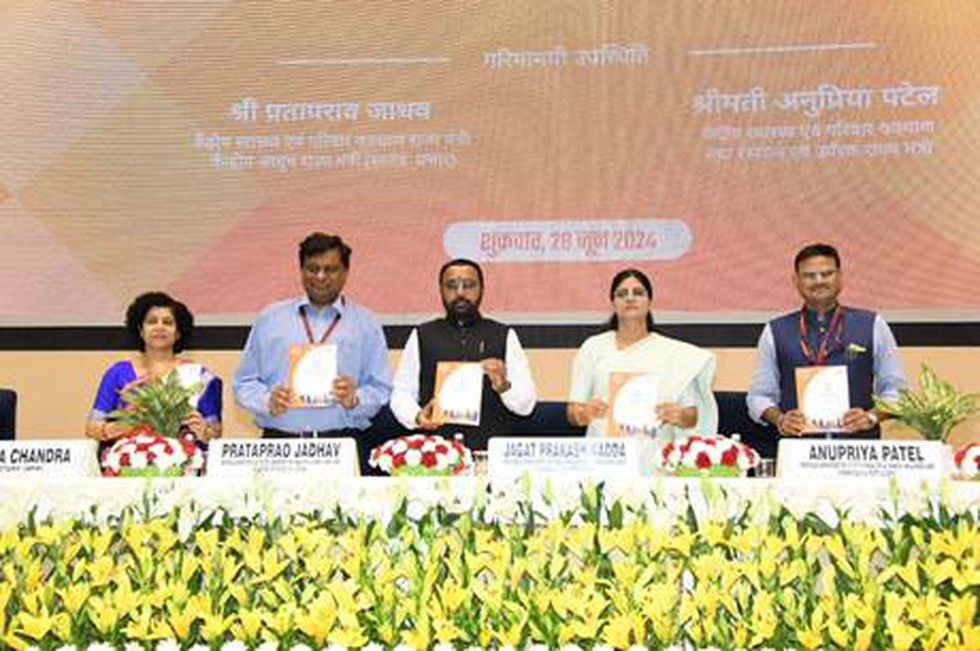
About National Quality Assurance Standards (NQAS) assessment:
- It has been launched for Ayushman Arogya Mandirs (AAM) and Integrated Public Health Laboratories (IPHL) in compliance with IPHS standards.
- IPHS is a digital platform for real-time monitoring of public health facilities that provides a comprehensive overview of the assessment and compliance status of public health facilities.
What is Spot Food Licence Initiative?
- It is for the instant issuance of licenses and registrations through the pan-India IT platform designed to address all food safety regulatory needs i.e Food Safety and Compliance System (FoSCoS).
- This new provision supplements the existing procedures for applying and obtaining licenses and registrations as prescribed under the Food Safety and Standards (Licensing and Registration of Food Businesses) Regulation, 2011.
- Instant issuance of licenses without the intervention of a licensing authority will be available for select categories such as wholesalers, distributors, retailers, transporters, storage without atmospheric control + cold, importers, food vending agencies, direct sellers and merchant-exporters.
- This scheme will not apply to businesses involved in high-risk food categories like milk, meat and fish.
What are Ayushman Arogya Mandirs?
- These have been established and operationalized to provide comprehensive, accessible healthcare services for all citizens.
- These are led by Community Health Officers, the primary healthcare teams at AAM are trained to manage initial care, triage, and refer patients to appropriate facilities for further treatment.
- This approach reduces the burden on secondary and tertiary care facilities by providing primary care services closer to the community with adequate referral linkages.
- The early identification and management of health issues help prevent disease progression, necessitating advanced care.
Prelims Pointers
June 30, 2024
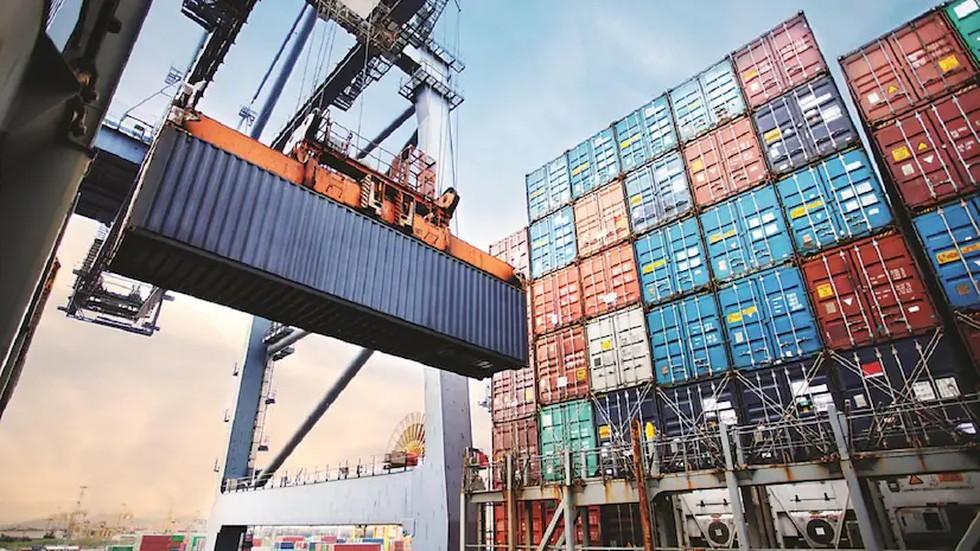
About Interest Equalisation Scheme:
- It was first implemented on 1st April 2015, to provide pre- and post-shipment export credit to exporters in rupees.
- It was initially valid for 5 years, up to 31.3.2020. The scheme has been continued thereafter, including a one-year extension during COVID and further extensions and fund allocations.
- Implementing agency: It is being implemented by the RBI through various Public and non-Public Sector banks that provide pre- and post-shipment credit to the exporters.
- The Scheme is jointly monitored by the Directorate General of Foreign Trade (DGFT) and the RBI through a consultative mechanism.
- The scheme helps the identified export sectors to be internationally competitive and to achieve a high level of export performance.
- Features:
- An eligible exporter has to submit a certification from the external auditor to the concerned bank to claim this benefit.
- Banks provide IES benefits to the eligible exporters and claim a reimbursement from the RBI based on the external auditor certification furnished by the exporter.
- Currently, the Scheme provides an interest equalisation benefit at the rate of 2% on pre- and post-shipment rupee export credit to merchant and manufacturer exporters of 410 identified tariff lines at 4-digit level and 3% to all MSME manufacturer exporters.
- The Scheme has now been made fund-limited, and the benefit to individual exporters has been capped at Rs 10 Crore per annum per IEC (Import Export Code).
- In addition, the banks that lend to exporters at an average rate of more than Repo + 4% would be debarred under the Scheme.
Prelims Pointers
June 30, 2024
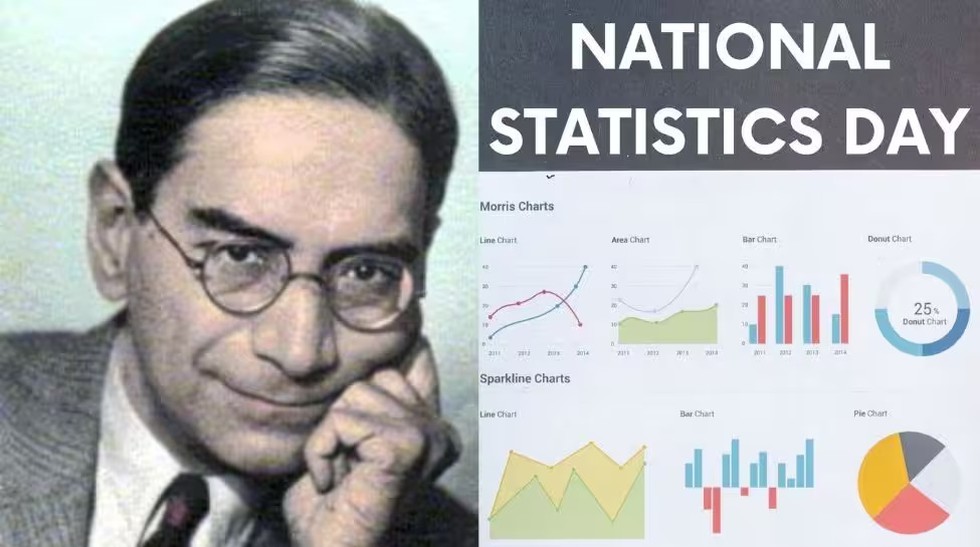
About National Statistics Day:
- It is celebrated in recognition of the notable contributions made by Professor (late) Prasanta Chandra Mahalanobis in the fields of statistics and economic planning.
- The main objective of celebrating Statistics Day is the creation of public awareness, especially among the younger generation, on the role and importance of statistics in socio-economic planning and policy formulation for the development of the country.
- Since 2007, Statistics Day has been celebrated every year with a theme of contemporary national importance.
- The theme for Statistics Day, 2024 is "Use of data for decision-making".
- The concept of data-driven decision-making is important for making informed decisions in any field, and it is one of the pre-requisites for better understanding of statistical information, emanating from official statistics and for facilitating evidence-based decision making.
Who is Prasanta Chandra Mahalanobis?
- He was born on 29 June 1893.
- He is known as the father of Indian statistics and was an Indian scientist and statistician. His role in India's post-independence economic planning is undeniable.
- He established the Indian Statistical Institute in 1931. It is one of the premier institutions for statistical research and training.
- He was awarded one of the highest civilian awards, the Padma Vibhushan from the Government of India for his contribution to science.
June 29, 2024
Prelims Pointers
June 29, 2024
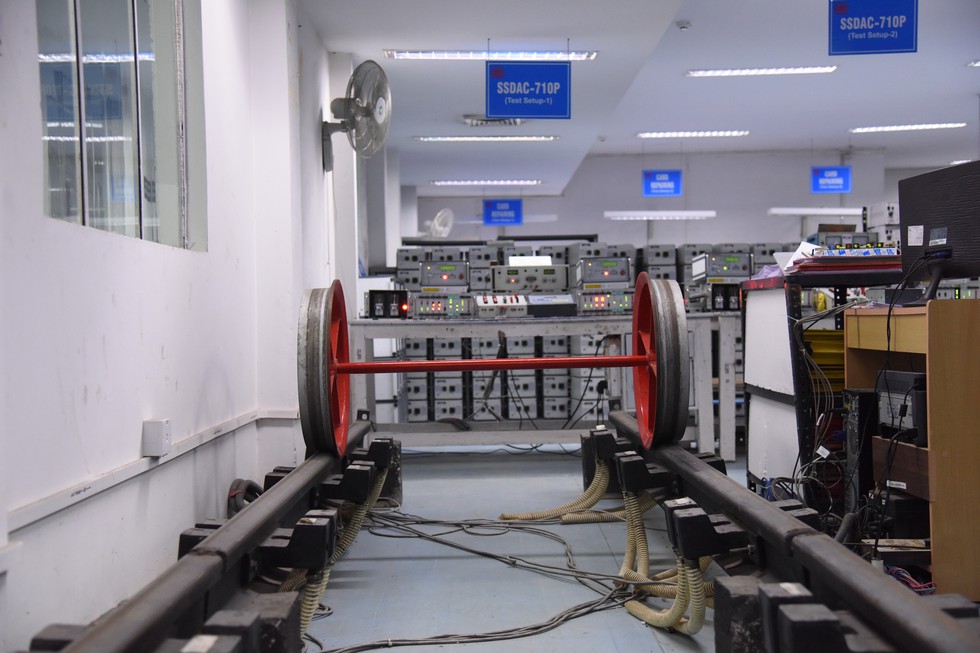
About Central Electronics Limited (CEL):
- It is a Govt. of India Enterprise under the Department of Scientific and Industrial Research (DSIR), Ministry of Science and Technology.
- It was established in 1974, with the objective to commercially exploit indigenous technologies developed by National Laboratories and R&D Institutions in the country.
- CEL's mission is to achieve excellence in the technology and manufacture, and be market leader in Solar Energy Systems and Strategic Electronics.
- It holds a unique position among the family of Public Sector Enterprises in Electronics, with its emphasis on indigenous technology inducted both from its in-house developments and from the National Laboratories, for its production programme in diverse high-technology areas of national importance.
- The activities of CEL are sharply focused on three thrust areas:
- Solar photovoltaic cells, modules, and systems for a variety of applications.
- Selected Electronic Systems: Equipment for Railway Signalling and Safety, Cathodic protection Equipment for Oil Pipelines, Switching Systems and Very Small Aperture Terminals (VSATs).
- Selected Electronic components-professional (Soft) Ferrites, Electronic Ceramics, Piezoelectric Elements and Microwave Components.
- CEL has been a pioneer in the country in the areas of solar photovoltaics, ferrites, and piezo ceramics.
- Today, it enjoys the international status of being among the top producers of crystalline silicon solar cells in the world.
- CEL has developed a number of critical components for strategic applications and is supplying these items to Defence.
Prelims Pointers
June 29, 2024

About GSAT 20 Satellite:
- It is India’s latest communications satellite.
- It is a hi-tech, heavy-weight satellite weighing 4,700 kg.
- It will have a high throughput capacity of 48 GBPS.
- The satellite made by ISRO has 32 spot beams, and it has been made to cover all of India, but with a special emphasis on providing connectivity for Northeastern India.
- The satellite will be owned and operated by ISRO's commercial arm New Space India Ltd. (NSIL).
- ISRO opted for SpaceX to launch GSAT 20 because India’s indigenous heavy rocket, the Launch Vehicle Mark 3, lacks the capability to lift such a heavy satellite.
Key Facts about New Space India Ltd. (NSIL):
- NSIL was incorporated in March 2019 as a wholly owned Government Company under the administrative control of the Department of Space.
- NSIL currently has an authorised share capital of ₹ 7500 Crore and a paid-up capital of ₹ 5607.60 Crores.
- NSIL is the commercial arm of ISRO, with the primary responsibility of enabling Indian industries to take up high technology space related activities.
- It is also responsible for promotion and commercial exploitation of the products and services emanating from the Indian space programme.
- The major business areas of NSIL include:
- Production of Polar Satellite Launch Vehicles (PSLV) and Small Satellite Launch Vehicles (SSLV) through industry;
- Production and marketing of space-based services, including launch services and space-based applications like transponder leasing, remote sensing, and mission support services;
- Building of satellites (both Communication and Earth Observation) as per user requirements.
- Transfer of technology developed by ISRO centres/units and constituent institutions of the Dept. of Space;
- Marketing spin-off technologies and products/ services emanating out of ISRO activities
- Consultancy services
Prelims Pointers
June 29, 2024
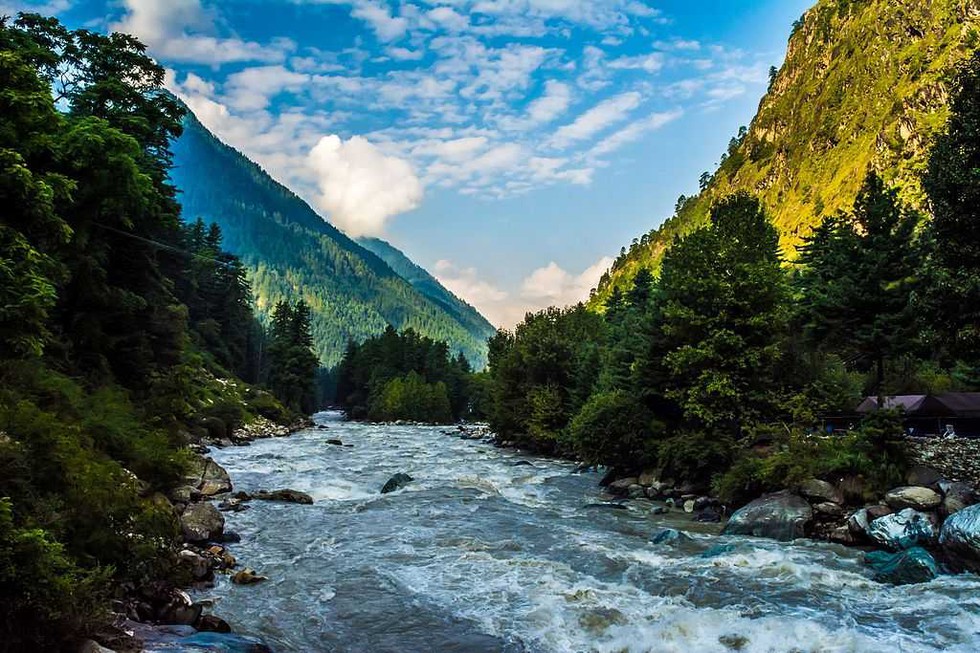
About Parvati River:
- The Parvati River, also known as the Parbati River, is located in the Parvati Valley of Himachal Pradesh.
- It is a major tributary of the Beas River.
- Course:
- It rises from the Mantalai Glacier below the Pin Parbati Pass on the Greater Himalayas western slope at an altitude of 5200 meters above mean sea level.
- This pass connects the fertile and lush Parvati valley on the Kullu side with the Pin valley on the Spiti side.
- The river flows for approximately 150 km, meandering through the valley and collecting water from several glacial streams along the way.
- As it flows, the Parvati River forms the picturesque regions of Malana and Manikaran and passes through lush green forests and rolling hills.
- The river is fed by melting glaciers and receives additional water from the monsoons that occur in the region.
- The river continues its course until it reaches Bhuntar, south of Kullu, where it merges with the Beas River.
- Some of the major tributaries of the Parvati River include: Malana Nala, Manikaran Nala, Rashol Nala, and Chalal Nala.
- The river also has geothermal springs on the banks of the river at Manikaran and Khirganga.
Prelims Pointers
June 29, 2024

About Svalbard:
- It is an archipelago that is situated in the Arctic Ocean, to the north of the European mainland.
- It is the northernmost place in the world with a permanent population.
- Discovery: It was discovered by the Dutch explorer Willem Barentsz in 1596.
- It is part of Norway. The 1920 Svalbard Treaty established Norwegian sovereignty over the Svalbard Islands.
- It is located about halfway between the North Pole and the northern part of Norway.
- It covers a total area of about 61,022 sq.km, of which 36,502 sq.km (about 60%) is covered by glacial ice and permanent snowfields.
- It is composed of several islands such as Spitsbergen, Nordaustlandet, Edgeøya, Barentsøya, Kvitøya, Kong Karls Land, Prins Karls Forland, Bjørnøya, and Hopen.
- Spitsbergen is the largest and most populous island.
- The island is bounded by the Arctic Ocean, the Greenland Sea, and the Norwegian Sea.
- The Svalbard Global Seed Vault is also located on Spitsbergen.
- Climate: The archipelago features an Arctic climate, although with significantly higher temperatures than other areas at the same latitude.
- Due to its location in the northern part of the Arctic Circle, the Svalbard Islands experience the midnight sun during the summer months and polar night during the winter months.
Prelims Pointers
June 29, 2024
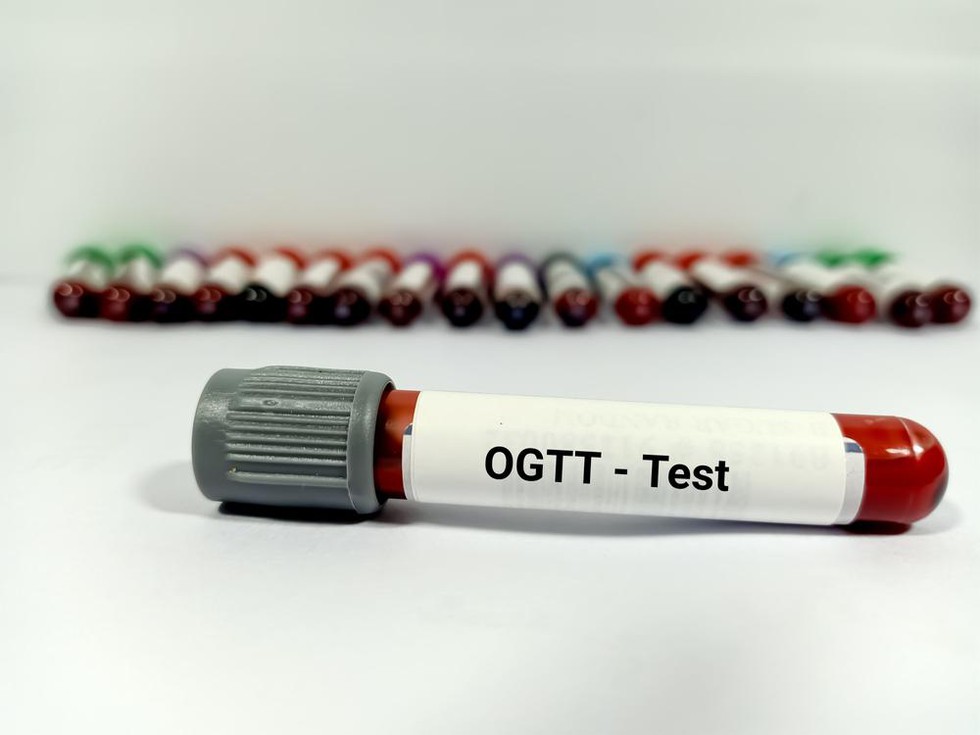
About Oral Glucose Tolerance Test (OGTT):
- OGTTs are done to measure how well the body can process large amounts of sugar.
- Procedure:
- The person fasts overnight, and in the morning, is given a fixed dose of glucose, usually in the form of a sweet drink.
- Blood samples are taken at 30-minute intervals for 2 hours.
- If the blood sugar reading is above a certain level, this could be a sign that sugar is not being absorbed fast enough by the body’s organs.
- Then diabetes, or gestational (pregnancy-related) diabetes, might be at the root of this problem.
- In gestational diabetes, blood sugar levels are often higher due to changes in the metabolism during pregnancy, but they usually come back down again after the child is born.
- Diabetes can lead to heart disease, nerve damage, eye disease, and kidney damage.
What is the HbA1c test?
- A hemoglobin A1C (HbA1C) test is a blood test that shows what your average blood sugar (glucose) level was over the past two to three months.
- Glucose in your blood sticks to hemoglobin, a protein in your red blood cells (RBCs).
- As your blood glucose levels increase, more of your hemoglobin will be coated with glucose.
- HbA1c is what’s known as glycated haemoglobin.
- An HbA1c test measures the percentage of your RBCs that have glucose-coated hemoglobin.
- RBCs are active for around 2-3 months, which is why the reading is taken quarterly.
- No preparation is needed for this test.
- A high HbA1c means you have too much sugar in your blood.
Prelims Pointers
June 29, 2024
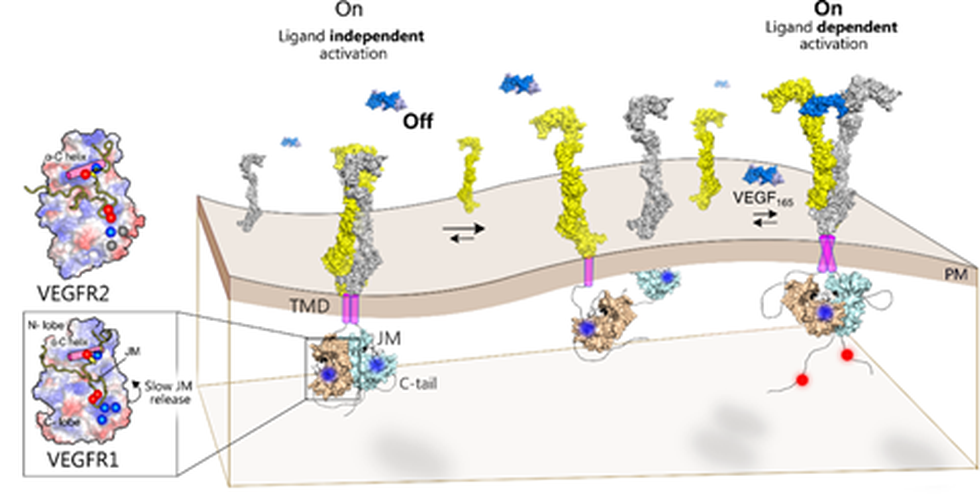
About Vascular Endothelial Growth Factor Receptor (VEGF):
- It is a key regulator of physiological angiogenesis during embryogenesis, skeletal growth and reproductive functions.
- VEGF has also been implicated in pathological angiogenesis associated with tumors, intraocular neovascular disorders and other conditions.
- The biological effects of VEGF are mediated by two receptor tyrosine kinases (RTKs), VEGFR-1 and VEGFR-2.
- The VEGFR family of receptors is the key regulator of the process of generating new blood vessels.
Highlight of the research
- The researchers were intrigued by the fact that two members of family VEGFR 1 and VEGFR 2 behaved quite differently.
- While VEGFR 2, the primary receptor regulating process of formation of new blood vessels, could be spontaneously activated, without its ligand, the other member of the family VEGFR 1 cannot be spontaneously activated even when overexpressed in cells.
- It camouflages as a dead enzyme VEGFR1 and binds with ten-fold higher affinity to its ligand VEGF-A than VEGFR2.
- This ligand binding induces a transient kinase (speeding up chemical reactions in the body by an enzyme) activation.
Prelims Pointers
June 29, 2024
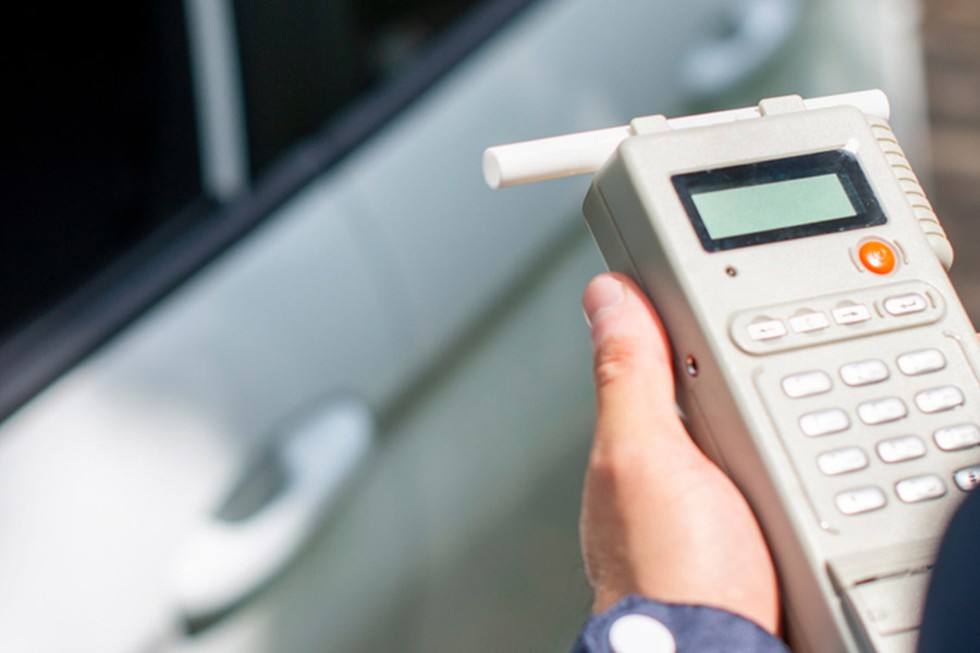
About Evidential Breath Analyzer:
- It is an Instrument that measures and displays the breath alcohol mass concentration of exhaled human breath within specified error limits.
- It provides a non-invasive way to measure blood alcohol content, offering quick and painless sample collection.
- Working of Breath Analyser
- In the case of alcohol detection, a precise amount of a person’s exhaled breath is passed through a solution of potassium dichromate and sulfuric acid in the analyzer.
- The change in the colour of the solution is proportional to the amount of alcohol in the air sample, which in turn is directly related to the alcohol content of the blood.
- Evidential Breath Analysers need to be verified and stamped according to the Legal Metrology Act, 2009, to ensure their accuracy.
- The rapid analysis capabilities allow law enforcement officers to make swift, informed decisions, enhancing the effectiveness of roadside checks.
- This verification protects individuals from wrongful penalties due to faulty equipment and helps maintain the integrity of legal and workplace policies.
- The availability of stamped and verified Evidential Breath Analysers to the public can raise awareness about the effects of alcohol on impairment and the legal limits for safe operation of vehicles and machinery. This encourages responsible behavior and informed decision-making.
- The rules are applicable to those types of Evidential Breath Analysers that use mouthpieces for sampling the breath.
Prelims Pointers
June 29, 2024
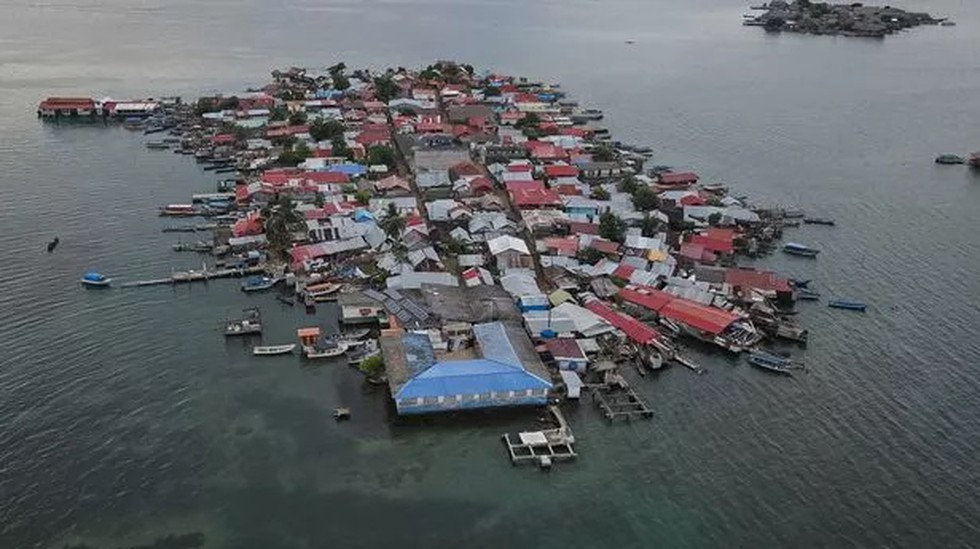
About Gardi Sugdub Island:
- It is a tiny island in the Caribbean Sea and a part of the San Blas archipelago, which comprises 365 islands, mostly uninhabited.
- It is home to 1,200 indigenous Guna people, who will soon be displaced to the mainland because of the sea level rise induced by climate change.
- The further movement of inhabitants from the surrounding islands is foreseen to be necessary by 2050.
- The Latin American nation is set to become the first to evacuate an entire island community due to climate change.
- Panama is situated in the Caribbean, where sea level rise currently averages around 3 to 4 millimetres per year
Key facts about the Caribbean Sea
- It is the Atlantic Ocean’s 2nd largest marginal sea that is geographically positioned between the continents of North and South America in the Western Hemisphere.
- It is bordered by the countries of Colombia, Panama, and Venezuela in the south; by Belize, Costa Rica, Guatemala, Honduras, Nicaragua, and Mexico’s Yucatan Peninsula in the west; by the Greater Antilles islands in the north; and by the Lesser Antilles islands in the east.
- The Caribbean Sea is connected with the Gulf of Mexico in the north via the Yucatan Channel.
Prelims Pointers
June 29, 2024
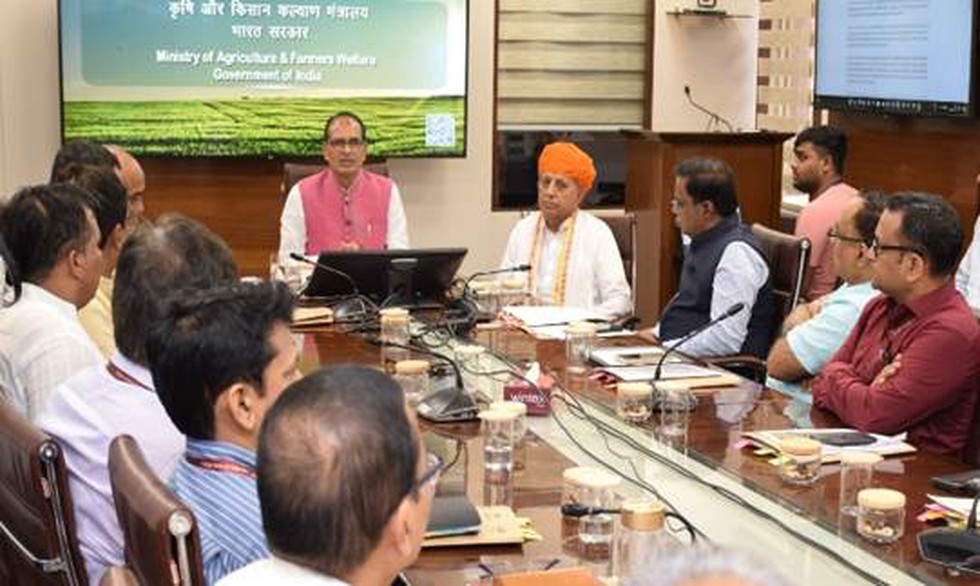
About Krishi Katha Platform:
- It showcases the voice of the Indian farmers, dedicated to amplifying the experiences, insights and success stories of farmers across the country.
- It aims to provide a comprehensive and immersive storytelling space where the narratives of India's agricultural community can be shared and celebrated.
- The objectives behind this initiative will be helpful in raising awareness, facilitating exchange of knowledge, fostering collaboration and empowering farmers.
Key facts about Agriculture Infrastructure Fund Scheme
- It was launched in 2020.
- Objective: Development of post-harvest management infrastructure for reducing losses, realisation of better value to farmers, innovation in agriculture and attracting investments for creation of Agriculture infrastructure with a total outlay of ₹ 1 lakh crore funding through the banks and financial institutions upto 2025-26.
- The scheme provides for 3% interest subvention to beneficiaries of the scheme for the loans given by banks upto ₹ 2 crore for a maximum period of 7 years, besides reimbursement of credit guarantee fee paid by banks.
Prelims Pointers
June 29, 2024
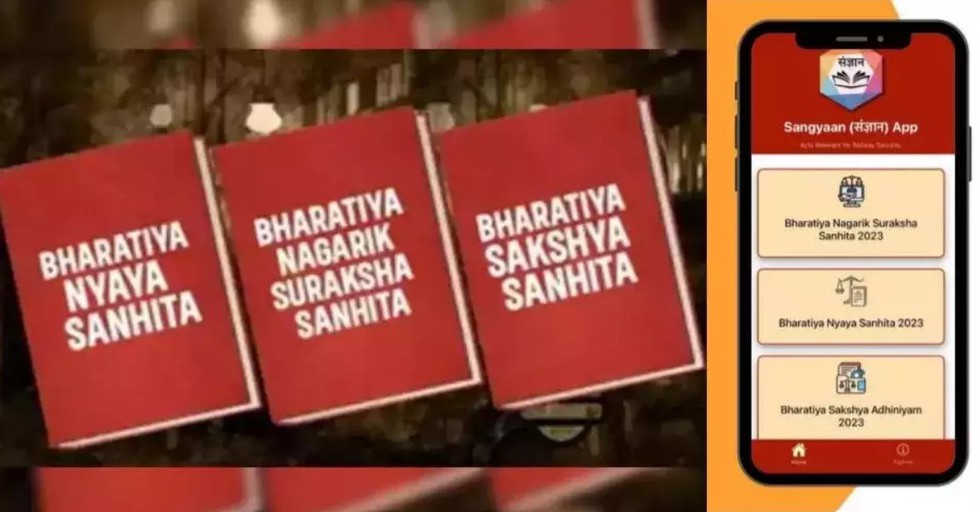
About Sangyaan App:
- It is designed and developed by the tech team of RPF.
- It is a practical tool for anyone seeking to stay informed about the latest legal developments in India.
- It aims to educate and empower RPF Personnel by providing comprehensive information to understand the provisions of both new and old criminal laws, while highlighting the relevance of these new acts in the context of RPF operations.
- It will provide in-depth information on three new Criminal Acts: the Bharatiya Nyaya Sanhita (BNS) 2023, the Bharatiya Nagarik Suraksha Sanhita (BNSS) 2023, and the Bharatiya Sakshya Adhiniyam (BSA) 2023.
- Key Features
- Comprehensive Legal Access
- Comparison of Laws
- Section wise analysis
- Advanced Search Tools
- Inclusive Legal Database
- User-Friendly Design
Key facts about Railway Protection Force
- The history of the RPF dates back to 1882 when various Railway companies appointed their own guards for protection of Railway property.
- It was declared as statutory force in the year 1957 by an enactment of Parliament and subsequently declared as an armed force of the Union of India in the year 1985.
- In 2003, the RPF partially took up the duties of escorting passenger trains and access control at the railway stations”.
- It is led by a Director-General.
- It is an armed force under the operational and administrative control of the Union Ministry of Railways.
- It is tasked with protecting and securing railway property, the passenger areas, and the passengers themselves.
June 28, 2024
Prelims Pointers
June 28, 2024
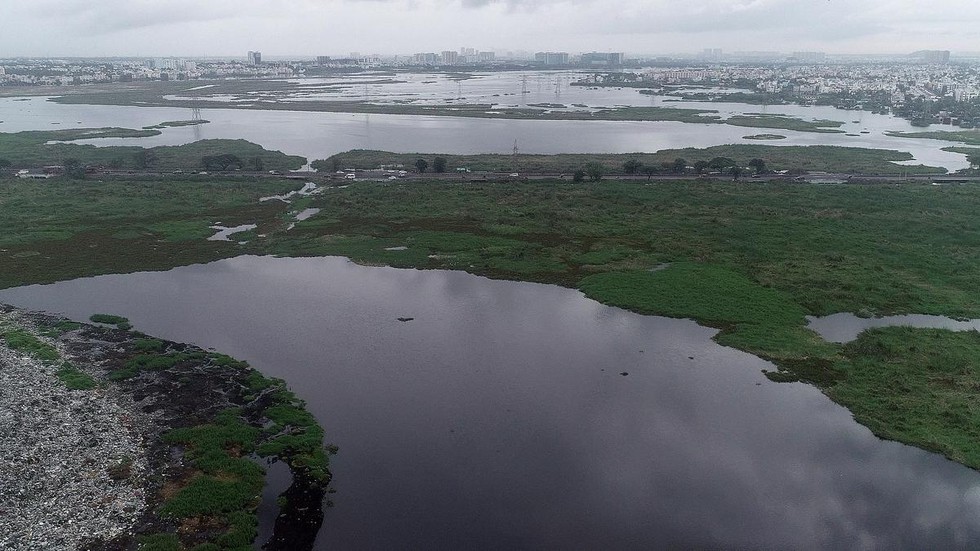
About Pallikaranai Marshland:
- It is a freshwater marsh and partly saline wetland situated about 20 kilometres south of the city of Chennai, Tamil Nadu.
- It is one of the last remaining natural wetlands in Chennai city.
- It serves as an aquatic buffer of the flood-prone Chennai and Chengalpattu districts.
- It drains an area of 250 sq.km, encompassing 65 wetlands, through two outlets, viz., Okkiyam Madavu and the Kovalam Creek, and falls into the Bay of Bengal.
- On its eastern periphery, the Marsh is flanked by the Buckingham Canal.
- Parts of the Marsh are well below the mean sea level and qualify as low-lying basins.
- It is one of the Ramsar sites in India.
- The diverse ecosystem of the marshland supports some 115 bird species, ten mammals, 21 reptiles, ten amphibians, 46 fish, nine molluscs, five crustaceans, and seven butterfly species.
- These include notable species such as Russell’s viper(Daboia siamensis) and birds such as the glossy ibis (Plegadis falcinellus), grey-headed lapwings (Vanellus cinereus), and Pheasant-tailed jacana (Hydrophasianus chirurgus).
- Although tropical in bio-climate, the influence of the Bay of Bengal has been significant on the Marsh.
- Dramatic changes in its hydrology and biodiversity witnessed annually may be attributed to the maritime influence and the vagaries of the North East Monsoon.
Prelims Pointers
June 28, 2024
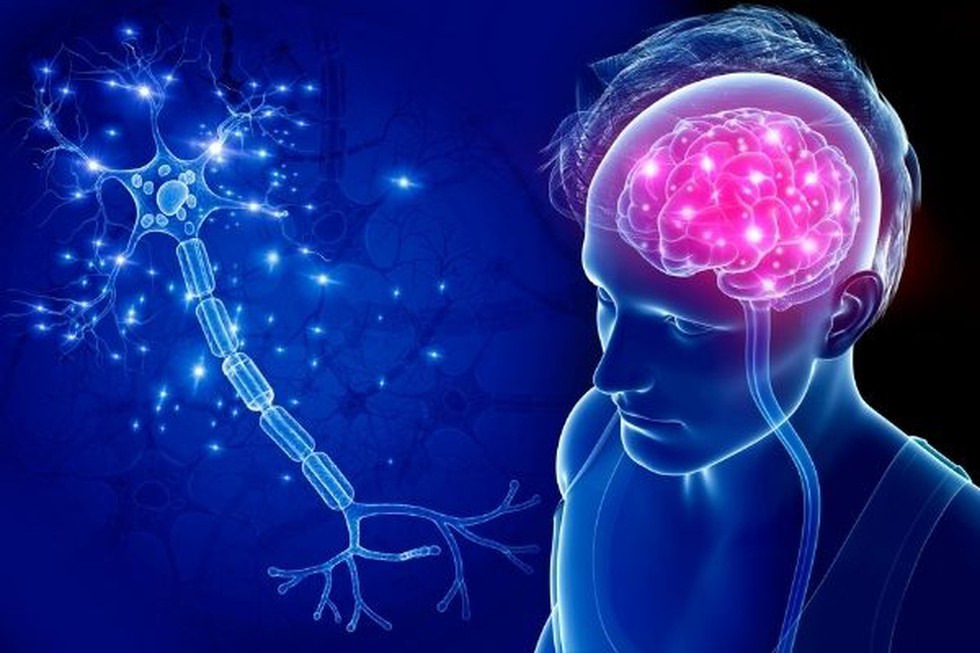
About Motor Neuron Diseases (MNDs):
- MNDs are a group of progressive neurological disorders that destroy motor neurons, the cells that control skeletal muscle activity such as walking, breathing, speaking, and swallowing.
- Motor neurons are found in the brain and spinal cord, and they help tell your muscles what to do.
- MND can appear at any age, but the symptoms usually appear after the age of 50 years.
- Early signs of MND include weakness and slurred speech. This eventually leads to paralysis.
- It affects more males than females.
- Causes:
- The exact cause of MND is not known. Generally, MND is believed to be caused by a combination of environmental, lifestyle, and genetic factors.
- Most cases of MND develop without an obvious cause.
- Around 1 in 10 cases is 'familial', meaning the condition is inherited. This is due to a genetic mutation, or an error in the gene.
- This group includes diseases such as amyotrophic lateral sclerosis, progressive bulbar palsy, primary lateral sclerosis, progressive muscular atrophy, spinal muscular atrophy, Kennedy's disease, and post-polio syndrome.
- The most common type of MND is amyotrophic lateral sclerosis (ALS).
- It affects both the upper and lower motor neurons—the neurons in the brain and spinal cord—which then affects the muscles of the arms, legs, mouth, and respiratory system.
- On average, people with ALS live for 3–5 yearsafter receiving the diagnosis, but with supportive care, some people live for 10 years or longer.
- Treatment:
-
- There is no cure or standard treatment for the MNDs.
- Symptomatic and supportive treatment can help people be more comfortable while maintaining their quality of life.
Prelims Pointers
June 28, 2024
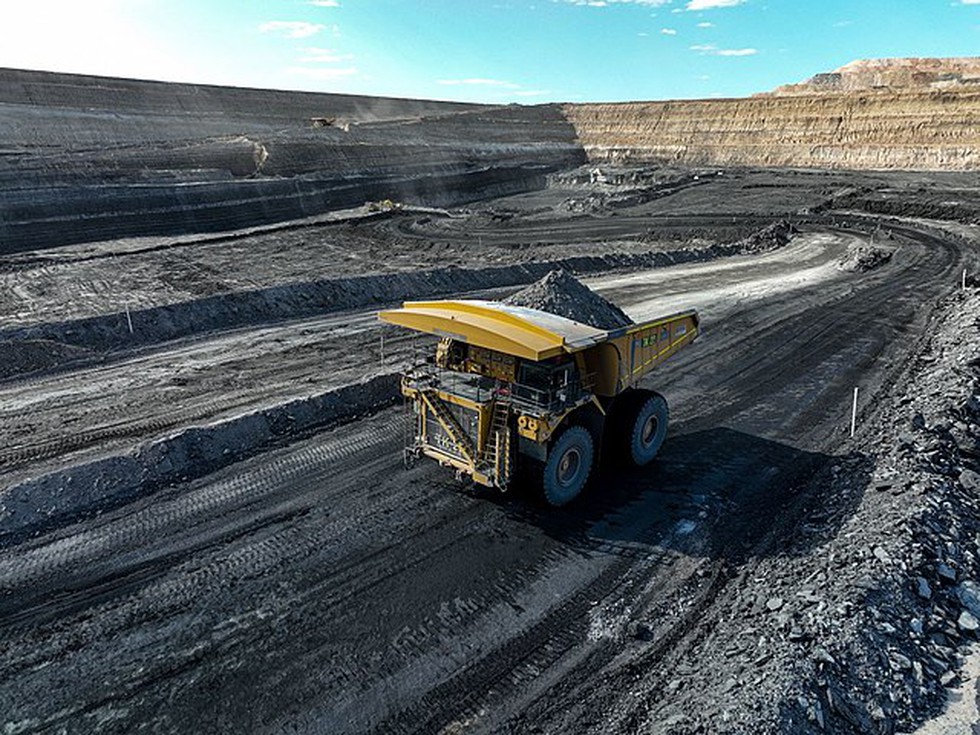
About Scheme for Partial Reimbursement of Exploration Expenses for Holders of Exploration Licences (EL):
- It was launched by the Ministry of Mines to offer partial reimbursement of exploration expenses to licence holders.
- It offers a 50 percent reimbursement on expenses incurred during the exploration of critical minerals, with a maximum cap of Rs 20 crore.
- The maximum cap can be increased to Rs 24 crore if the EL holder hands over a G2 (general exploration) block for auction for the grant of a mining lease within three years from the execution of the exploration licence and it is successfully auctioned.
- The incentives for all selected licensees will be provided from the Rs 5,000 crore National Mineral Exploration Trust (NMET) fund.
- However, the EL holder must repay the amount received from the NMET within ten years, in equal annual installments, starting from the beginning of mineral production and the receipt of auction premium shares from any mining leases auctioned based on their exploration.
- If the EL holder receives a lump sum payment instead of annual premiums, they must repay the full amount to NMET within one month of receiving the lump sum payment.
- Though EL holders will have to return the money, there is no limit on the number of applications or the scheme’s outlay.
- The initiative is part of the National Mineral Exploration Policy (NMEP) of 2016, which aims to involve the private sector in mineral exploration by leveraging their expertise, technology, and financial resources.
- The exploration of critical and deep-seated minerals became possible after the 2023 amendment to the Mines and Minerals (Development and Regulation) Act, 1957 (MMDR Act).
- This amendment introduced a new mineral concession for the exploration of 29 critical and deep-seated minerals listed in the Seventh Schedule of the Act, aiming to encourage private sector participation.
- The scheme allows optional participation for EL holders granted licences through auction after the scheme's introduction.
- To avail these benefits, the holders must submit an exploration expense reimbursement proposal within six months of receiving their EL.
- Decisions on reimbursement under the scheme—whether accepted, rejected, or disputed — will not impact the obligations of EL holders as per the terms of their EL set by the State Government at the time of auction.
- The ministry has divided the exploration exercise into six stages, each eligible for 50 per cent reimbursement with a maximum cap of Rs 20 crore.
- The guidelines have also outlined specific maximum outlays for each stage in the scheme.
- During the geological mapping and sampling stage, an EL holder can seek reimbursement up to Rs 1.50 crore.
- For geophysical investigations, the reimbursement limit is Rs 3 crore, and for exploratory drilling, it stood at Rs 10 crore.
- Additionally, the expenses for chemical and petrological analysis, mineral beneficiation, research collaborations, and consultancy services can be reimbursed up to Rs 2.50 crore, Rs 1.50 crore, and Rs 1.50 crore respectively.
- Logistics expenses, which include setting up camp offices and hiring personnel, can be reimbursed up to Rs 1.50 crore annually, with a maximum of Rs 30 lakh per year.
Prelims Pointers
June 28, 2024
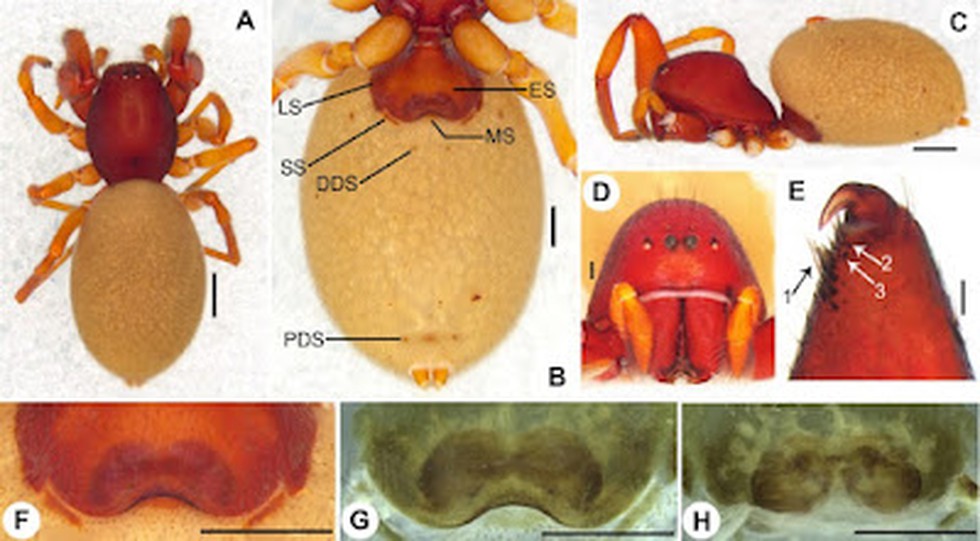
About Steriphopus Wangala:
- It is a newly discovered species of spider from the West Garo Hills district of Meghalaya.
- It has been named after the Garo community's harvest festival, the Wangala festival, or the 100 Drums Festival.
- This spider belongs to the Palp-Footed Spider family, characterized by their disproportionately powerful and heavily sclerotized first pair of legs.
- It has a characteristic reddish-brown colour.
What is the Wangala festival?
- Wangala festival, also known as the 100 drums festival, is a popular festival among the Garos of Meghalaya.
- The Wangala Festival marks the end of the agricultural season. This is followed by thanking the spirits and deities for a bountiful harvest and seeking their blessings for the upcoming year.
- It is the occasion when the tribals offer sacrifices to please their main deity, Saljong, the Sun God.
- It also signifies the onset of winter.
- The highlight of Wangala is the rhythmic beat of a hundred drums. These drums are a big part of Garo culture, and they are traditionally made out of tree trunks.
- Towards the end of the festival (which continues for days), the largest batch of dancers converge on the main celebration area with multiple drums and perform the ceremonial and traditional dances.
- The dance is characterised by dancers moving to the rhythmic drumming.
Who are Garos?
- The Garos call themselves Achik-mande.
- Garos form the second largest tribe in the state of Meghalaya.
- They are one of the last remaining matrilineal tribes in the world.
- Two mountain ranges, the Arabella range and the Tura range, pass through the Garo Hills, forming the great Balpakram valley in between.
- Balpakram area is considered sacred for the Garo community due to their belief that the spirits of the dead sojourn here.
- The highest pointin the Garo Hills is Nokrek Peak, with an elevation of 1412 m, which is covered by a thick film of lush forest.
- The region is home to the esteemed Nokrek National Park, protects a highly diverse plant and animal diversity. In 2009, the park was designated a biosphere reserve by UNESCO.
Prelims Pointers
June 28, 2024

About Juno Probe:
- JUNO is an acronym for Jupiter Near-Polar Orbiter.
- It is a NASA spacecraft designed to orbit the planet Jupiter.
- Juno was launched by an Atlas V rocket from Cape Canaveral, Florida, on August 5, 2011.
- The Juno spacecraft initially embarked on a 5-year journey to the largest planet in our solar system, Jupiter.
- Main Goal: Learn more about Jupiter’s origins and how the planet has changed.
- Since it arrived at Jupiter in 2016, it has been probing beneath the dense, forbidding clouds encircling the giant planet – the first orbiter to peer so closely.
- Juno orbits Jupiter every 11 days in a highly elliptical orbit (4,400 by 2,700,000 km [2,700 by 1,700,000 miles]) over the planet’s poles.
- It is solar-powered.
- Though Juno’s primary mission wrapped in July 2021, it’s been granted an extended mission that’s expected to end in 2025.
- During the extended mission, Juno is exploring even more of the Jupiter system, including some of the planet’s most intriguing moons: Ganymede, Europa, and Io. Juno will also investigate Jupiter’s atmosphere and rings in greater detail.
Prelims Pointers
June 28, 2024
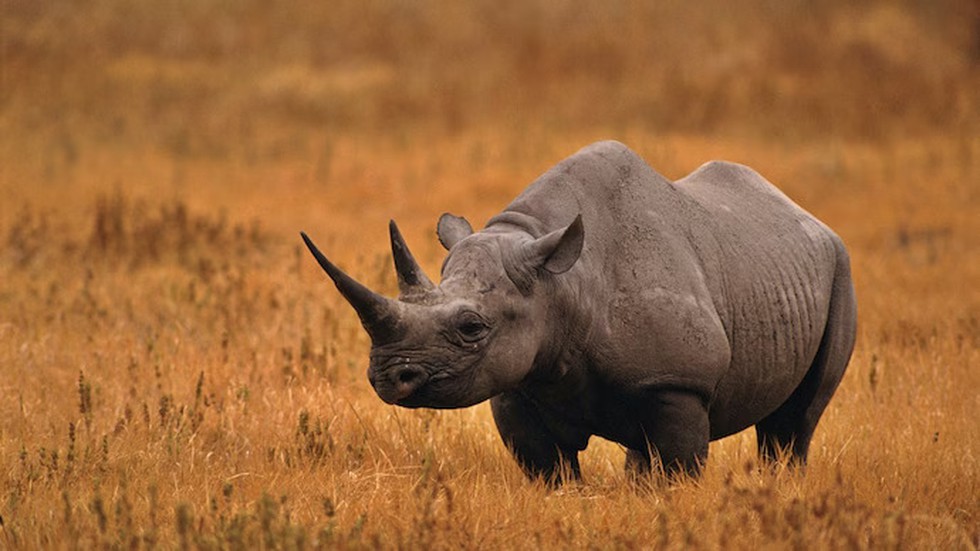
About Rhisotope Project:
- It was started in 2021 in South Africa.
- It aims to make the rhinoceros horns easier to detect at border posts and render them useless for human consumption.
- The project involves inserting two tiny radioactive chips into the horns of 20 rhinos.
- The low-dose radioactive material is designed to be detectable by radiation sensors at international borders without harming the animals or the environment.
- The radioactive material is expected to last five years on the horn, making it a more cost-effective solution than dehorning every 18 months. Additionally, the team sprayed 11,000 microdots on each treated horn for further identification.
- The team of scientists will take follow-up blood samples to ensure the rhinoceroses are effectively protected.
South Africa, home to the majority of the world's rhinos, has been battling a poaching crisis driven by demand from Asia, where rhino horns are used in traditional medicine.
Prelims Pointers
June 28, 2024
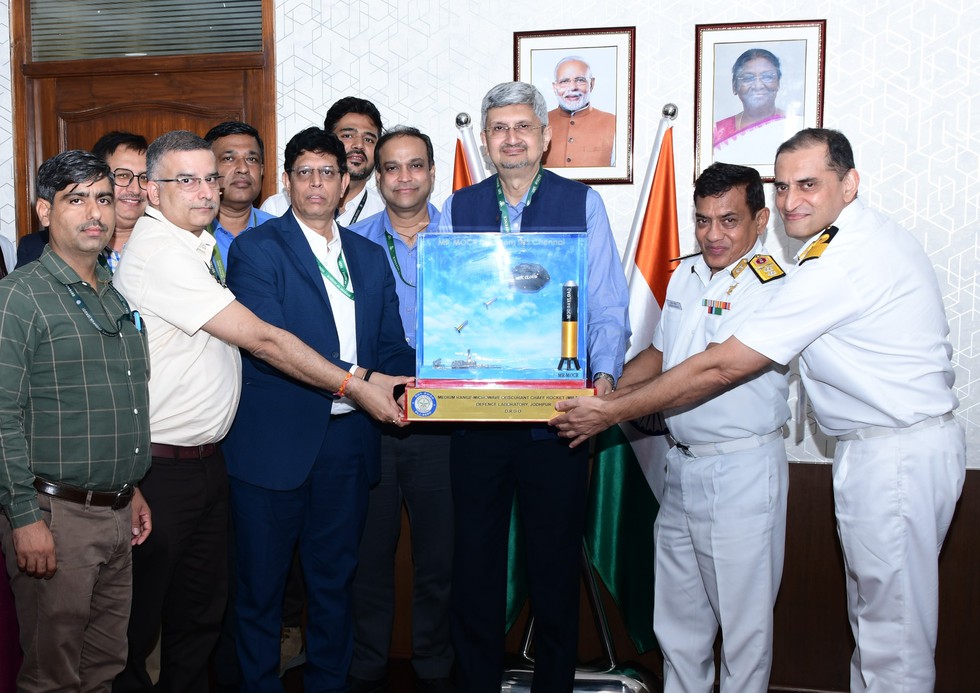
About Microwave Obscurant Chaff Rocket:
- Microwave Obscurant Chaff (MOC) is a niche technology developed by DRDO’s Defence Laboratory, Jodhpur
- It obscures radar signals and creates a microwave shield around platforms and assets, thus reducing radar detection.
- Special type of fibres, with diameter of a few micrometers and unique microwave obscuration properties, has been assembled in the medium range chaff rocket.
- How does it function? When the rocket is fired it forms microwave obscurant cloud in space spreading over a sufficient area, with adequate persistence time, thus creating an effective shield against hostile threats having Radio Frequency seekers.
- DRDO has indigenously developed three variants of this critical technology namely Short Range Chaff Rocket (SRCR), Medium Range Chaff Rocket (MRCR) and Long Range Chaff Rocket (LRCR).
- Phases
- The Phase-I trials of MR-MOCR were successfully conducted from Indian Navy ships, demonstrating the MOC cloud blooming and being persistent in space.
- In Phase-II trials, the Radar Cross Section (RCS) reduction of an aerial target to the extent of 90 per cent has been demonstrated and cleared by the Indian Navy.
Prelims Pointers
June 28, 2024

About Bhuvan Panchayat geoportal 4.0:
- It is an online geospatial data and services dissemination platform to support integration and utilisation of space-based information into governance and research initiatives involving spatial planning up to Gram Panchayat level.
- Developed by: This WebGIS platform developed by NRSC, ISRO.
- It enables visualisation, analysis, sharing of web map service (WMS) services of all thematic data products generated at 1:10k under the Space based Information Support for Decentralized Planning (SISDP) project.
What is the National Database for Emergency Management (NDEM) portal?
- It provides a comprehensive uniform, structured, multi-scale scale geospatial database for the entire country for situational assessment and effective decision-making during disasters/ emergency situations.
- It acts as a national level geo-portal to provide space-based information with the amalgamation of DSS tools and services of disaster forecasting organisations with value addition addressing all natural disasters in all phases of disasters for an effective Disaster Risk Reduction in the Country.
- It will also act as a Disaster Recovery and Data Provider node for the Integrated Control Room for Emergency Response (ICR-ER) being established by MHA, New Delhi.
Prelims Pointers
June 28, 2024
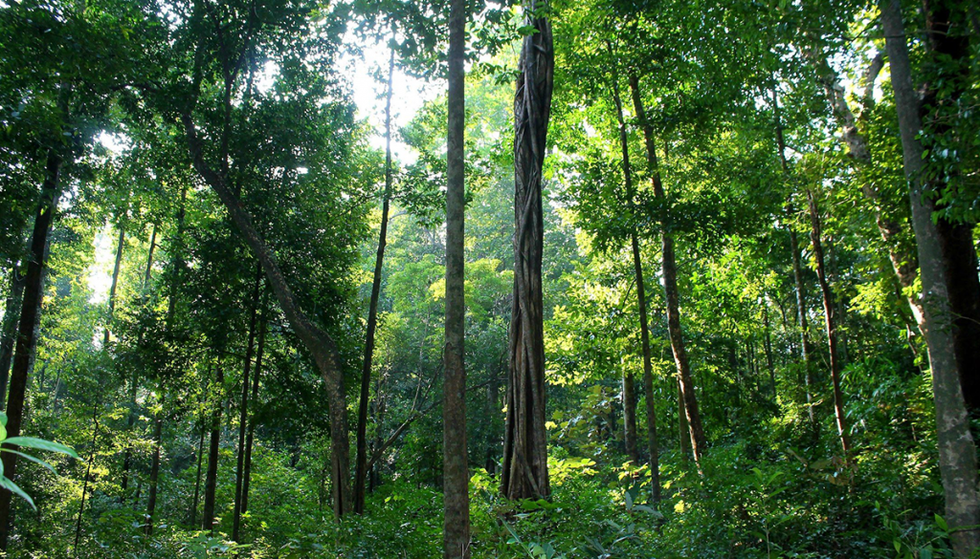
About Raimona National Park:
- It is located in the state of Assam along the Indo-Bhutan border.
- Boundaries
- The northern part of it shares the Indo-Bhutan international border with Phibsoo Wildlife Sanctuary in Bhutan.
- Western part: It is marked by the Sankosh River along with the inter-state boundary of West Bengal and Assam from the Indo-Bhutan border.
- Eastern part of Raimona National Park, the Saralbhanga River (also called Swrmanga) flows southward from Sarphang district of Bhutan.
- Vegetation: It includes as many as twelve different types and sub-types of forests ranging from very moist sal forests, sub-Himalayan high alluvial semi-evergreen forests, savannah forests, moist-mixed deciduous forests, riparian fringing forests to khoir-sissoo forests.
- Flora: This park flourishes with myriads of orchid species, other tropical rainforest species, and riverine grasslands
- Fauna: Golden Langur shares its space with Asian Elephants, Royal Bengal Tiger, Clouded Leopard, Indian Gaur etc.
Key facts about Mainland Serow
- It is a mammal that appears somewhere between a goat and an antelope.
- According to the International Union for Conservation of Nature, the mainland serow inhabits areas at altitudes of 200-3,000 metres.
- Distribution: The animal habitat is across the India-Bhutan border in Phibsoo Wildlife Sanctuary and the Royal Manas National Park in the Himalayan country.
- There are three other species of the animal: Japanese serow, red serow (found in eastern India, Bangladesh, and Myanmar) and Taiwan or Formosan serow.
- Conservation status
- IUCN: Vulnerable
- CITES : Appendix I
Prelims Pointers
June 28, 2024
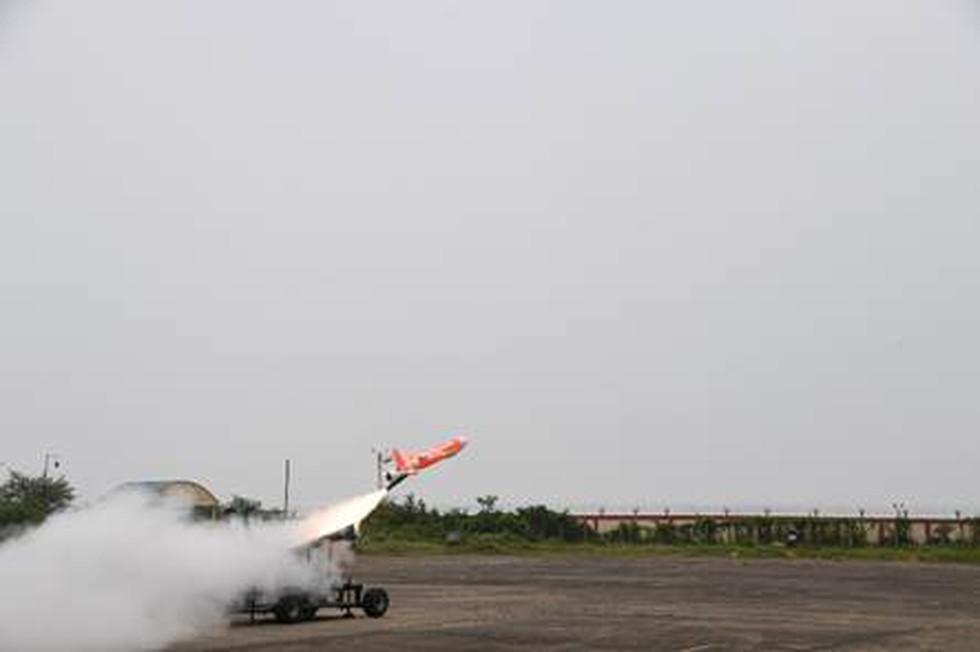
About ABHYAS:
- It is a High Speed Expendable Aerial Target (HEAT).
- It has been designed by DRDO’s Aeronautical Development Establishment, Bengaluru, and developed through Production Agencies - Hindustan Aeronautics Limited & Larsen & Toubro.
- Features
- It offers a realistic threat scenario for weapon systems practice.
- This indigenous system is designed for autonomous flying with the help of an autopilot, a laptop-based Ground Control System for aircraft integration, pre-flight checks, and autonomous flight.
- It also has a feature to record data during flight for post-flight analysis.
- The booster has been designed by Advanced Systems Laboratory and the navigation system by Research Centre Imarat.
Key Facts about DRDO
- It was formed in 1958 from the amalgamation of the then-existing Technical Development Establishment (TDEs) of the Indian Army and the Directorate of Technical Development and Production (DTDP) with the Defence Science Organisation (DSO).
- It is the R&D wing of the Ministry of Defence, of India, with a vision to empower India with cutting-edge defence technologies and a mission to achieve self-reliance in critical defence technologies and systems.
- It has a network of laboratoriesengaged in developing defence technologies covering various fields, like aeronautics, armaments, electronics etc.
- Headquarters: New Delhi.
June 27, 2024
Prelims Pointers
June 27, 2024
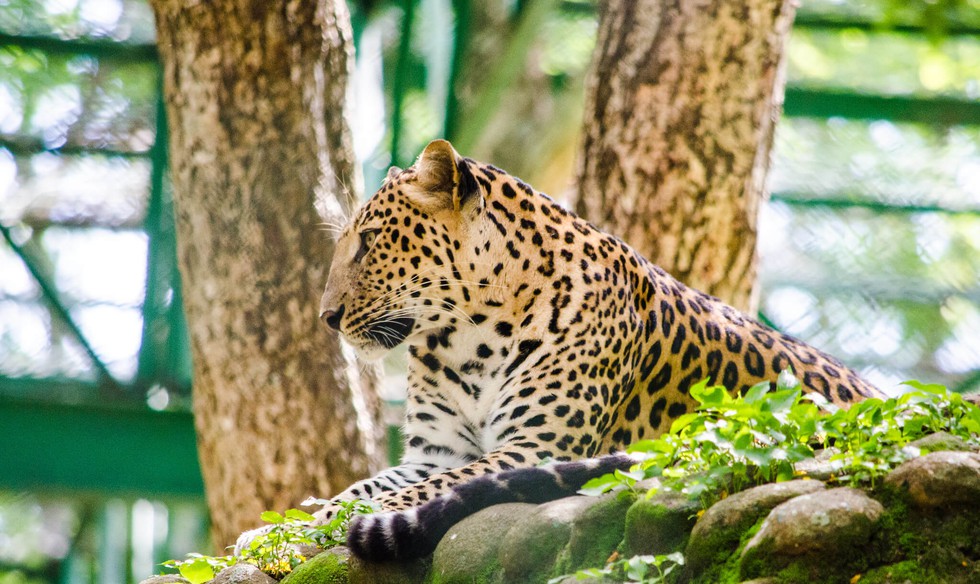
About Bannerghatta Biological Park (BBP):
- It has been an integral part of Bannerghatta National Park and emerged as an independent establishment in 2002.
- In order to meet the growing demand for eco-recreation, eco-tourism, and conservation, an area of 545.00ha of forest from the National Park was set aside to constitute a biological park originally and later extended to 731.88ha.
- It is located about 22 kms south of Bengaluru city, Karnataka.
- It has different units such as Zoo, Safari, Butterfly Park, and Rescue Centre (Conservation of Captive animals).
- It is the first biological park in Indiato have a fenced, forested elephant sanctuary.
Key Facts about Bannerghatta National Park:
- Location: It is located near Bangalore, Karnataka, in the hills of the Anekal range.
- It was declared a National Park in 1974.
- In 2006, India's first butterfly enclosurewas inaugurated at the park.
- River: The Suvarnamukhi stream, the main source of water for the animals in the park, runs through the centre of the park.
- Vegetation: There are three types of vegetation that can be found: Dry Deciduous Scrub Forests, Southern Tropical Dry DeciduousForests and Southern Tropical Moist Mixed Forests.
- Flora: Include Narcissus latifolia, Schleichera oleosa, Sandalwood, Neem, Tamarind, Bamboo, Eucalyptus,etc.
- Fauna: Prime habitat for several species, including the endangered Asian Elephant, Indian gaur, Tiger, Sambar deer, Spotted deer, Leopard, Wild dog, Wild pig, Sloth bear, Common mongoose, Pangolin, Slender loris, Black-naped hare, etc.
Prelims Pointers
June 27, 2024
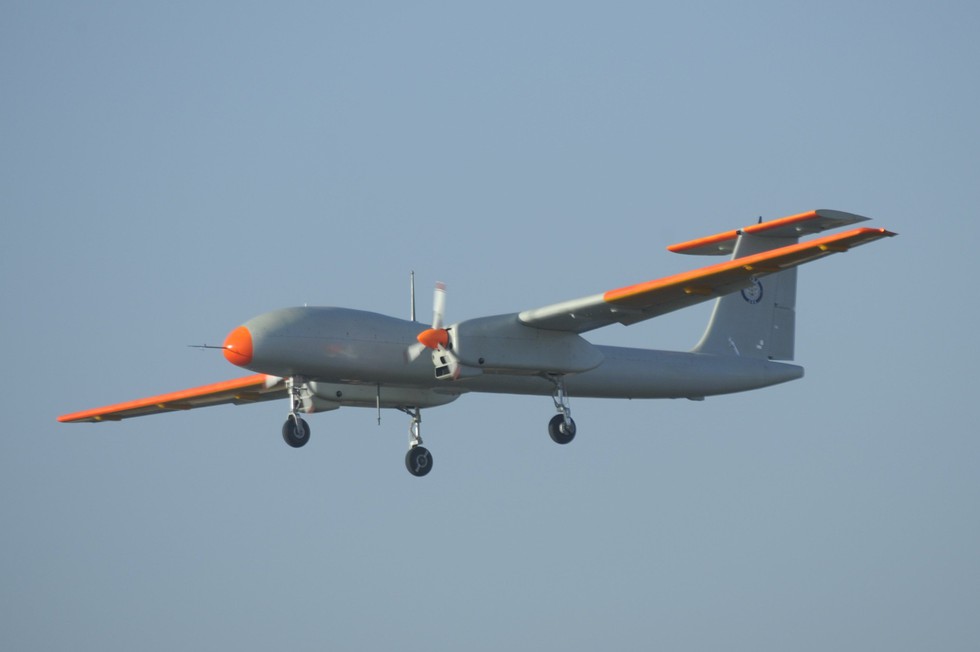
About TAPAS UAV:
- The Tactical Airborne Platform for Aerial Surveillance Beyond Horizon-201, or Tapas BH-201, is a medium-altitude, long-endurance (MALE) drone.
- It was previously referred to as Rustom-II.
- It was developed indigenously by the Aeronautical Development Establishment (ADE) of Defence Research and Development Organisation (DRDO).
- Designed to fulfil the Intelligence, Surveillance, Target Acquisition, Tracking & Reconnaissance (ISTAR) requirements of the tri-services, the Tapas UAV can effectively operate both day and night.
- Features:
- It has an operating altitude of 30000 feet and an endurance of 24 hours.
- It also projects a range of 250 km, which can carry a variety of payloads up to a maximum of 350 kg with a wing span of 20.6 metres.
- Maximum speed: 225 kmph.
- It can be controlled remotely and also has the ability to execute pre-programmed flight plans autonomouslywith precision and flexibility.
- It is equipped with enhanced aerodynamic configuration, digital flight control, navigation system, communication intelligence, medium and long-range electro-optic payloads and synthetic aperture radar that will enable it to see through the clouds.
Prelims Pointers
June 27, 2024
About Crime and Criminal Tracking Networks and Systems (CCTNS):
- CCTNS was conceptualized by the Ministry of Home Affairs under the National e-governance plan of India and is being implemented as a "Mission Mode Project (MMP)" since 2009.
- It is an ambitious project that aims to put in place a comprehensive and integrated system for enhancing the efficiency and effectiveness of policing at the police station level throughout the country.
- It aimed to interlink all police stations under a common application software for the purposes of investigation, data analytics, research, policymaking and providing Citizen Services such as reporting and tracking of complaints, requests for antecedent verifications by Police, etc.
- The records of crimes and criminals available at one police station will be accessible to any other police office.
- Objectives
- Make the Police functioning citizen-friendly and more transparent by automating the functioning of Police Stations.
- Improve the delivery of citizen-centric services through effective usage of ICT.
- Provide the Investigating Officers of the Civil Police with tools, technology and information to facilitate the investigation of crimes and the detection of criminals.
- Improve police functioning in various other areas such as Law and Order, Traffic Management, etc.
- Facilitate interaction and sharing of information among Police Stations, Districts, State/UT Headquarters, and other Police Agencies.
- Assist senior Police Officers in better management of the Police Force.
- Keep track of the progress of cases, including in Courts.
- Reduce manual and redundant record-keeping.
- The project is being implemented with close collaboration between the States and the Union Government.
- The National Crime Records Bureau (NCRB) is the central nodal agency that would manage CCTNS.
Key Facts about National Crime Records Bureau (NCRB):
- It was established in 1986 to act as a repository of information on crime and criminals.
- It comes under the Ministry of Home Affairs (MHA), Government of India.
- It was set up based on the recommendations of the Tandon Committee, the National Police Commission (1977-1981), and the Task Force of the Home Ministry.
- It is responsible for collecting and analysing crime data as well as serving as a repository of such information to aid investigators in tracing crimes and criminals.
- Headquarters: New Delhi
- The Central Finger Print Bureau under the NCRB is a national repository of all fingerprints in the country.
- NCRB also compiles and publishes National Crime Statisticse. Crime in India, Accidental Deaths & Suicides, and also Prison Statistics.
- NCRB also assists various States in capacity building in the areas of Information Technology, CCTNS, Finger Prints, Network security, and Digital Forensics.
Prelims Pointers
June 27, 2024
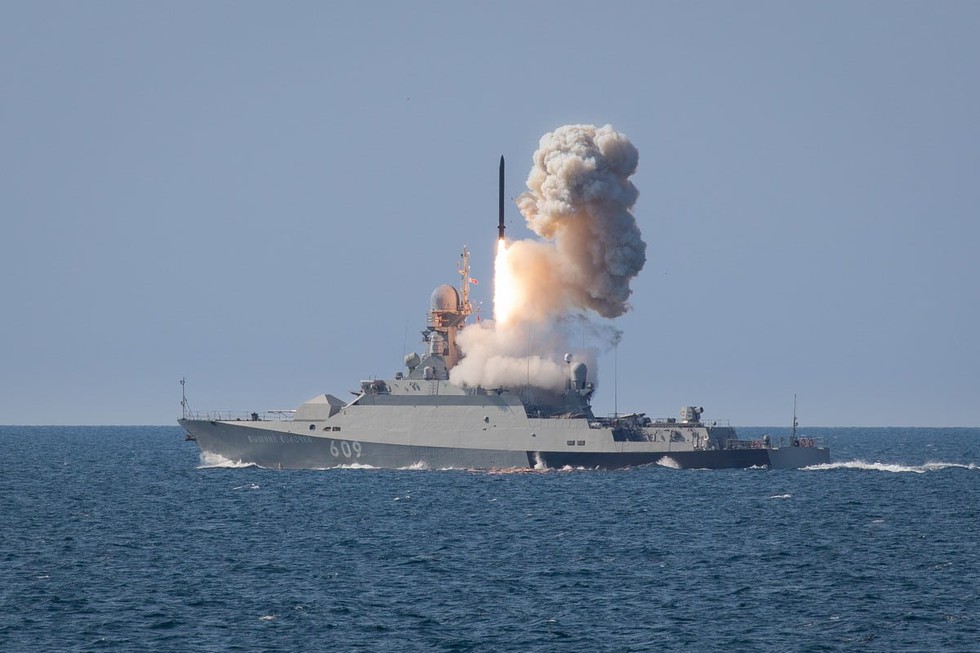
About Kalibr Missile:
- It is a family of Russian cruise missiles that can be launched from ships, submarines, containers, airplanes, or transport erector launchers.
- It has variants designed for anti-ship, anti-submarine and land attack purposes.
- They were developed and produced by Russia's Almaz-Antey corporation.
- Features:
- Depending on the variant, the Kalibr missile varies in mass and length, ranging from 1,300 kg to 2,300 kg and from 6.2 m to 8.9 m, respectively.
- It has a diameter of 0.533 m and can carry a warhead weighing between 400-500 kg of high explosive or thermonuclear material.
- The missile utilizes a multi-stage solid-fuel rocket engine, with some versions incorporating a turbojet engine or a solid-fuel rocket.
- These missiles use inertial guidance with satellite navigation update.
- They can accelerate in the terminal stage to supersonic speed to avoid enemy defenses.
- Range: It varies between 200 km and 2500 km, depending on the type.
Prelims Pointers
June 27, 2024
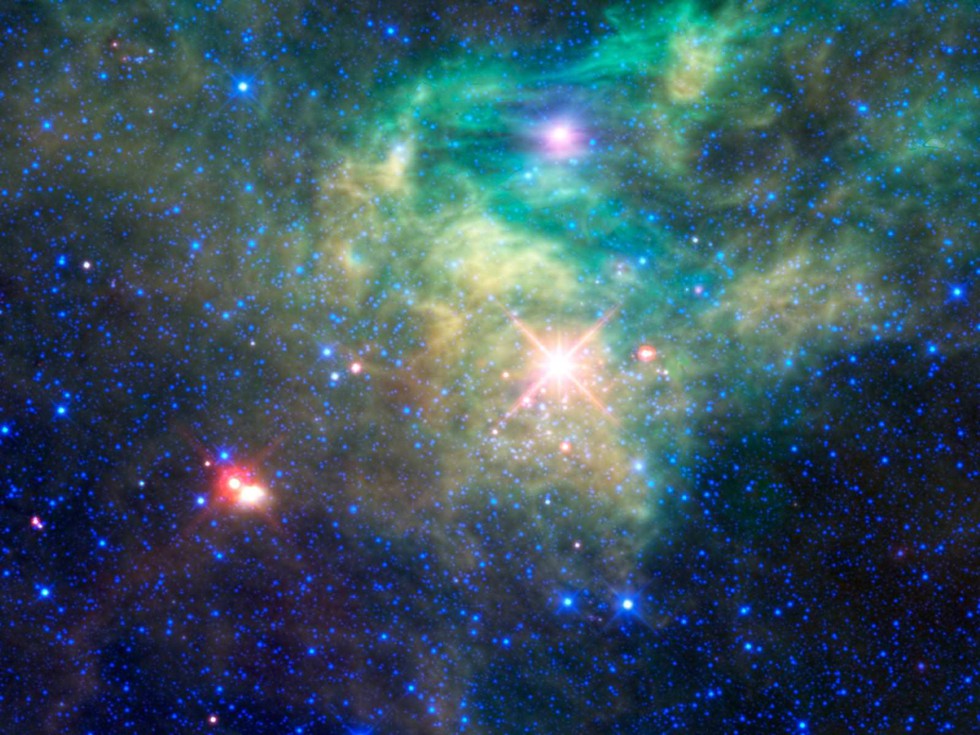
About Star Clusters:
- A Star cluster is either of two general types of stellar assemblages held together by the mutual gravitational attraction of its members, which are physically related through common origin.
- They are particularly useful to astronomers as they provide a way to study and model stellar evolution and ages.
- The two basic categories of stellar clusters are open clusters, also known as galactic clusters and globular clusters.
- Open (Galactic) Clusters:
- Open clusters are so named due to the fact that the individual component stars are easily resolved through a telescope.
- They are sometimes called galactic clusters due to their location on the dusty spiral arms on the plane of spiral galaxies.
- Stars in an open cluster have a common origin: they formed from the same initial giant molecular cloud.
- Open clusters contain from a dozen to many hundreds of stars, usually in an unsymmetrical arrangement.
- Globular Clusters:
- Globular clusters contain several thousand to one million stars in a spherical, gravitationally-bound system.
- Located mostly in the halo surrounding the galactic plane, they comprise the oldest stars in the galaxy.
- There is little free dust or gas found in globular clusters, so no new star formation is taking place in them.
- Stellar densities within the inner regions of a globular cluster are very high compared with regions such as those around the Sun.
- In addition, groups called associations, made up of a few dozen to hundreds of stars of similar type and common origin whose density in space is less than that of the surrounding field, are also recognized.
Prelims Pointers
June 27, 2024
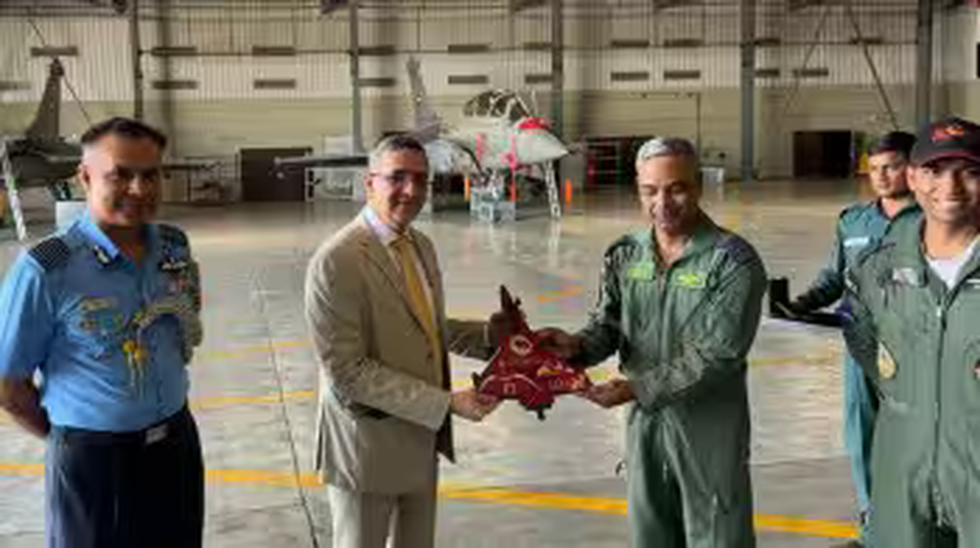
About Exercise HOPEX:
- It is the fourth joint exercise of IAF (Indian Air Force) and EAF (Egyptian Air Force) which was held in Egypt from 21 to 26 June.
- The aim of this exercise is to promote bilateral and regional cooperation, which is a symbol of the long-standing relations between the two countries.
- The Indian Air Force’s (IAF) Rafale fighter jets are currently in Egypt for Ex- HOPEX. The C-17 Globemaster and IL-78 tankers are also participating in the weeklong exercise.
India and Egypt relationship
- Diplomatic relations between India and Egypt began on 18 August 1947 at the ambassadorial level.
- Both countries have cooperated closely on multilateral forums as founding members of the Non-Aligned Movement.
- In the year 2022, India and Egypt celebrated the 75th anniversary of diplomatic relations, which reflects the depth of the relationship.
Prelims Pointers
June 27, 2024
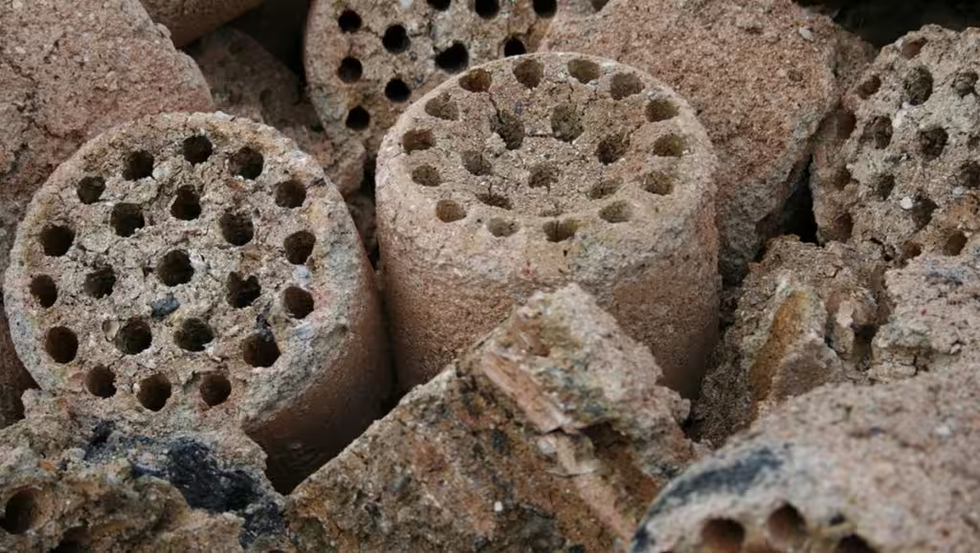
About Biomass briquettes:
- These are made up of compact blocks of organic materials, such as agricultural residues, forestry wastes, or industrial by-products.
- Applications: These are used for heating, cooking fuel and electricity generation usually in developing countries that do not have access to more traditional fuel sources.
- Advantages
- Environment Friendly: Bio-briquettes can be created from easily available biomass waste often found in rural settings.
- Affordable: These can be made by hand from any freely available organic matter, including invasive species and agro-waste.
- Biomass briquettes are carbon-neutral, meaning they release no additional carbon dioxide into the atmosphere when burned.
- By reducing reliance on fossil fuels, the adoption of biomass briquettes helps mitigate greenhouse gas emissions, thus contributing to climate change mitigation efforts.
- By diverting residues towards productive use, biomass briquettes play a crucial role in waste management and carbon sequestration, further enhancing their environmental credentials.
Prelims Pointers
June 27, 2024

About eSakhsya App
- It is a mobile-based application to help police record the scene of crime, search and seizure in a criminal case and upload the file on the cloud-based platform.
- Working
- The police official will have to upload a selfie after the procedure is complete.
- Each recording could be a maximum four minutes long and several such files could be uploaded for each First Information Report (FIR).
- This mobile application developed by the National Informatics Centre (NIC) will be available to all police stations which register and download the App.
Key facts about the National Informatics Centre
- It is the premier information technology organization of the Government of India. Established in 1976, it operates under the Ministry of Electronics and Information Technology (MeitY).
- The NIC's primary focus is to provide e-Government solutions and support to various government departments.
- NIC, through its ICT Network, “NICNET”, has institutional linkages with all the Ministries /Departments of the Central Government, 36 State Governments/ Union Territories across India.
- The following major activities are being undertaken:
- Setting up of ICT Infrastructure
- Implementation of National and State Level e-Governance Projects/Products
- Consultancy to the Government departments
- Research & Development
Prelims Pointers
June 27, 2024
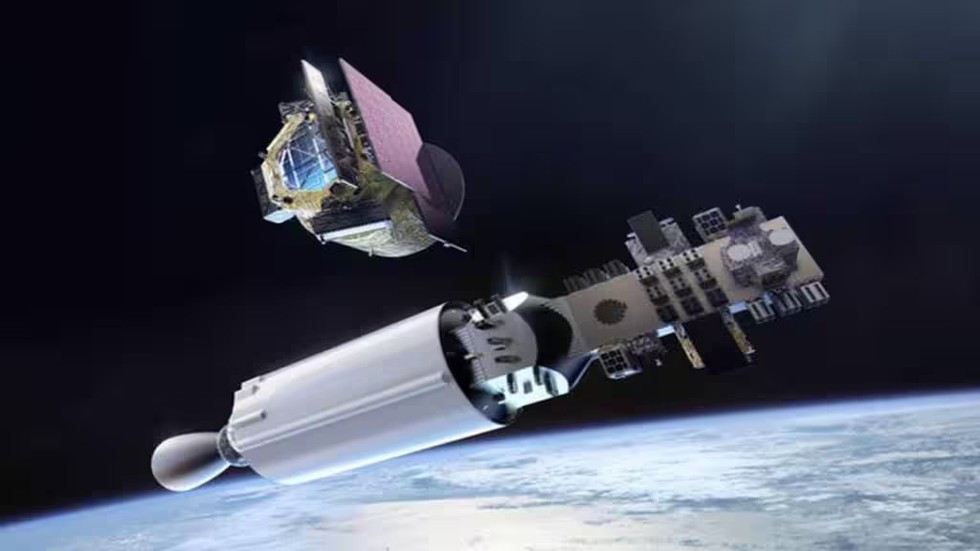
About Space MAITRI Mission:
- Space MAITRI (Mission for Australia-India's Technology, Research and Innovation), represents a major step forward in the strategic partnership between the two nations in the space domain.
- It aims to foster closer ties between commercial, institutional and governmental space organizations from India and Australia.
- It focuses on debris management and sustainability, aligning with both nations' core values and objectives in promoting responsible space operations and mitigating the growing threat of space debris.
- Under this agreement, NewSpace India Limited will launch Australia’s Space Machines Company's second Optimus spacecraft in 2026.
- The 450kg Optimus spacecraft, the largest Australian-designed and built spacecraft to date, will be launched on ISRO's Small Satellite Launch Vehicle (SSLV).
Key facts about NewSpace India Limited
- It is a commercial arm under Department of Space(DoS), Government of India.
- It was incorporated in March 2019 and was set up to take high technology space-related activities in India.
- Under the new space policy reforms announced by the Government of India in June 2020, NSIL is to undertake operational satellite missions on a “demand-driven” model.
- They are responsible to build, launch, own and operate the satellite and provide services to customers.
- It is headquartered in Bengaluru.
Prelims Pointers
June 27, 2024

About ULLAS-Nav Bharat Saaksharta Karyakram:
- The Understanding Lifelong Learning for All in Society (ULLAS) is a centrally sponsored scheme implemented from 2022-2027.
- The scheme aligns with the recommendations of the National Education Policy (NEP) 2020.
- Aim: It aims to empower those adults aged 15 years and above from all backgrounds who could not get due schooling and mainstream them with society to be able to contribute more to the growth story of the country.
- The scheme consists of five components
- Foundational Literacy and Numeracy,
- Critical Life Skills,
- Basic Education,
- Vocational Skills, and
- Continuing Education.
- The ULLAS app can be used for registration of learners and volunteers either through self-registration or by surveyors.
- It will serve as a digital gateway for learners to engage in diverse learning resources through the DIKSHA portal of NCERT.
What is the DIKSHA portal?
- It is a national platform for school education, an initiative of the National Council for Education Research and Training (NCERT), Ministry of Education.
- It provides e-content for schools via an online portal and a mobile application.
- It was developed based on the core principles of open architecture, open access, open licensing, choice and autonomy.
- It is built on open-source technology that is made in India and for India, incorporating internet-scale technologies and allowing for a variety of use cases and solutions for teaching and learning.
- Features
- The core building blocks of DIKSHA comprise majority of National Digital Education Architecture (NDEAR) building blocks, having enabled some successful use-cases of NDEAR such as energised textbooks, online courses, content authoring, content sourcing, interactive quizzes, question banks, chatbot, analytics and dashboard.
- To aid teaching and learning for Children With Special Needs(CWSN), a large number of audiobooks, ISL (Indian Sign Language) Videos, and a Dictionary have been made available on DIKSHA for CWSN.

